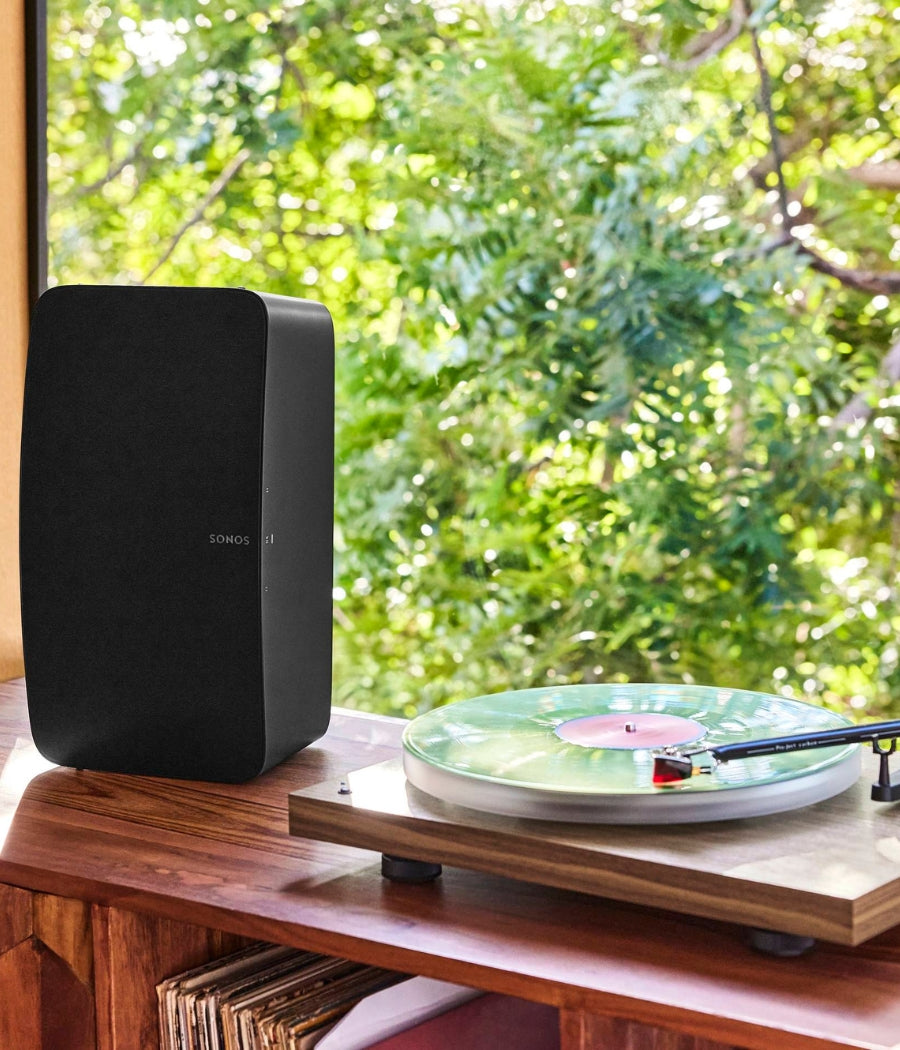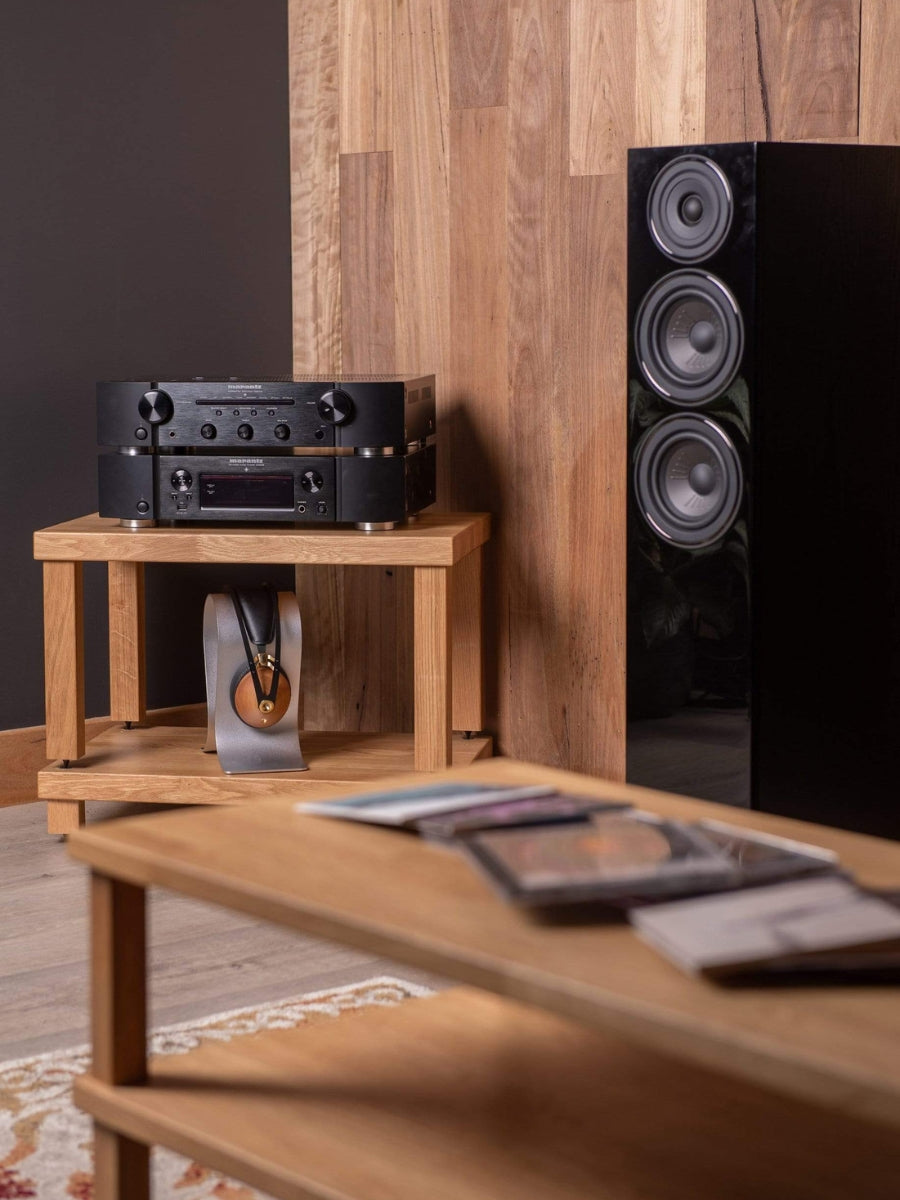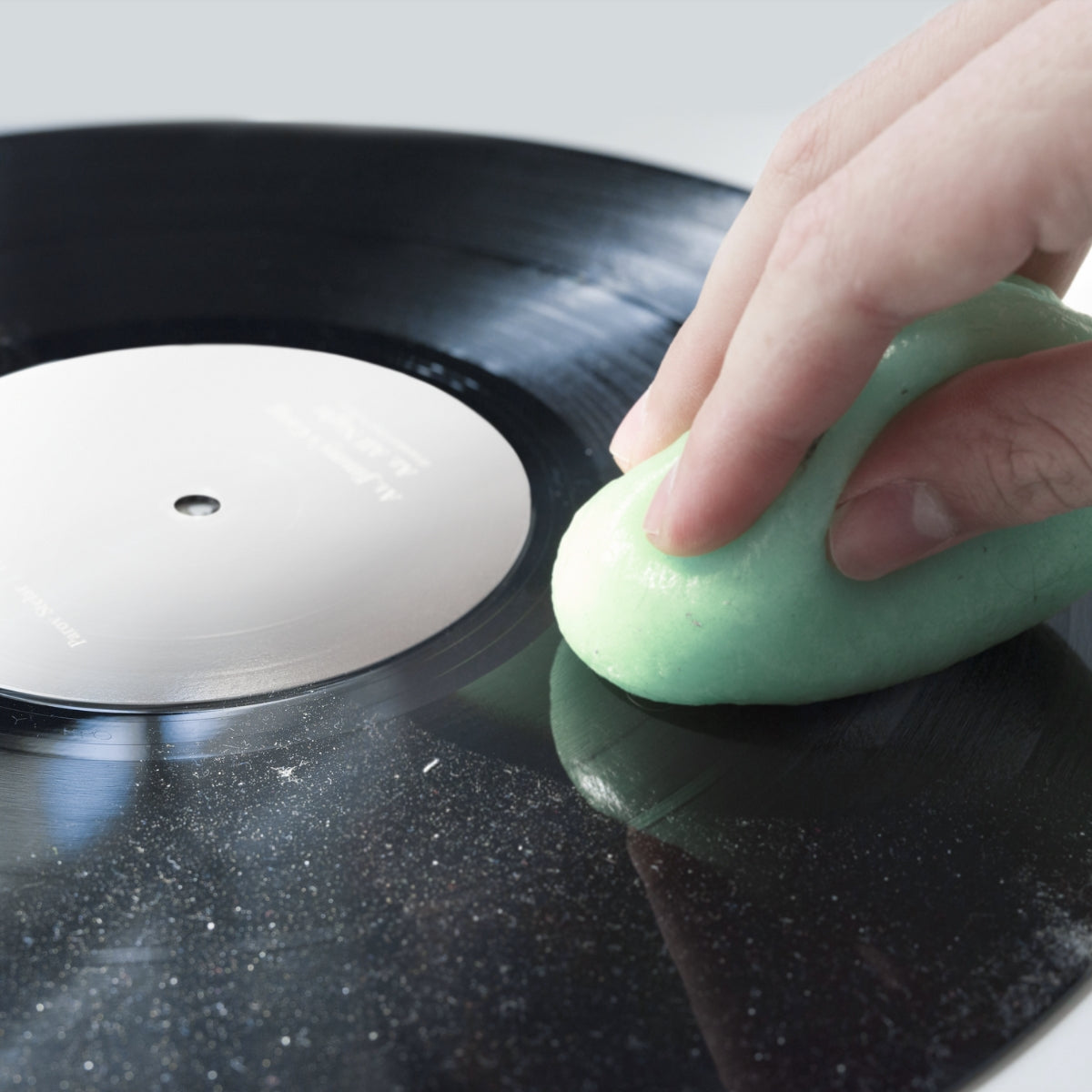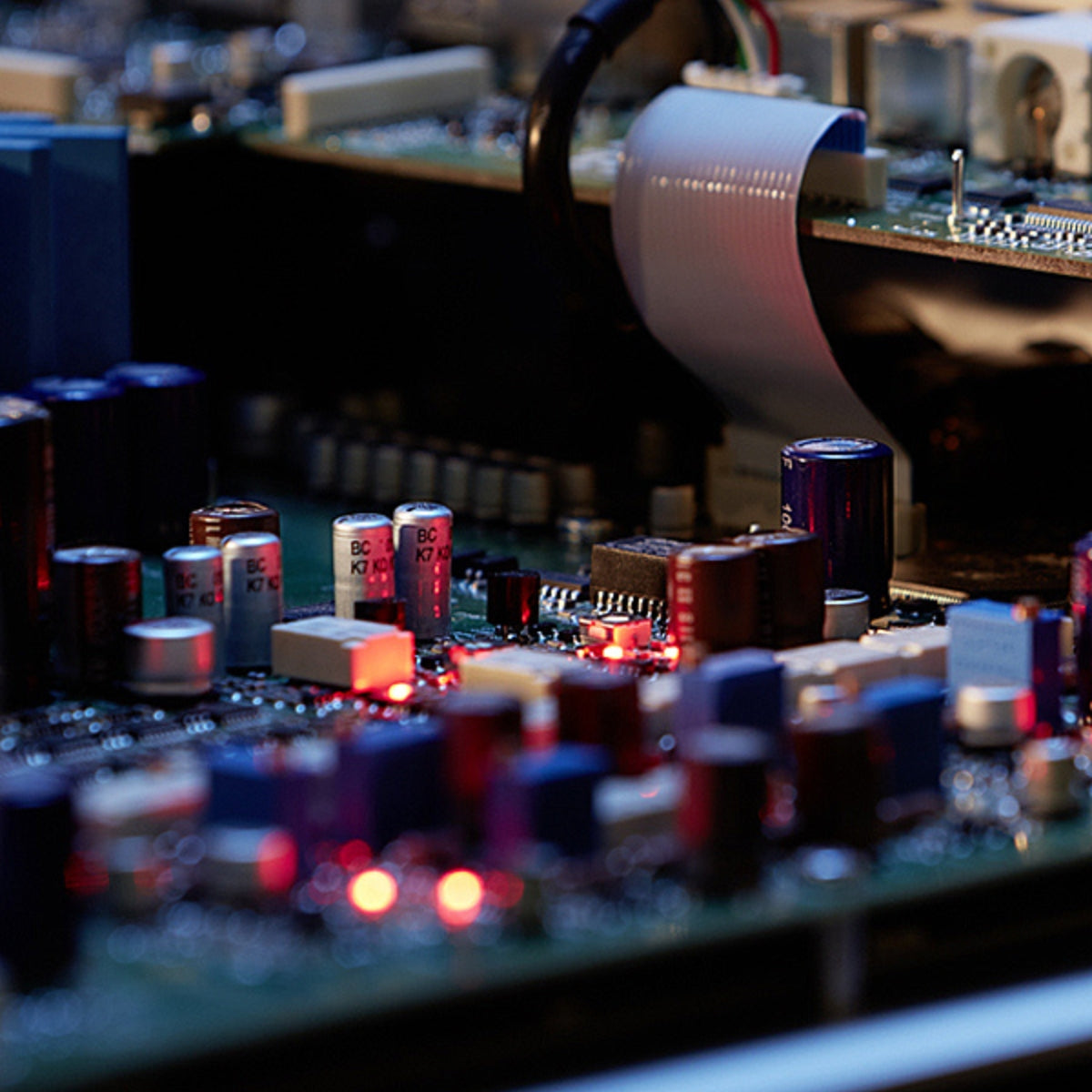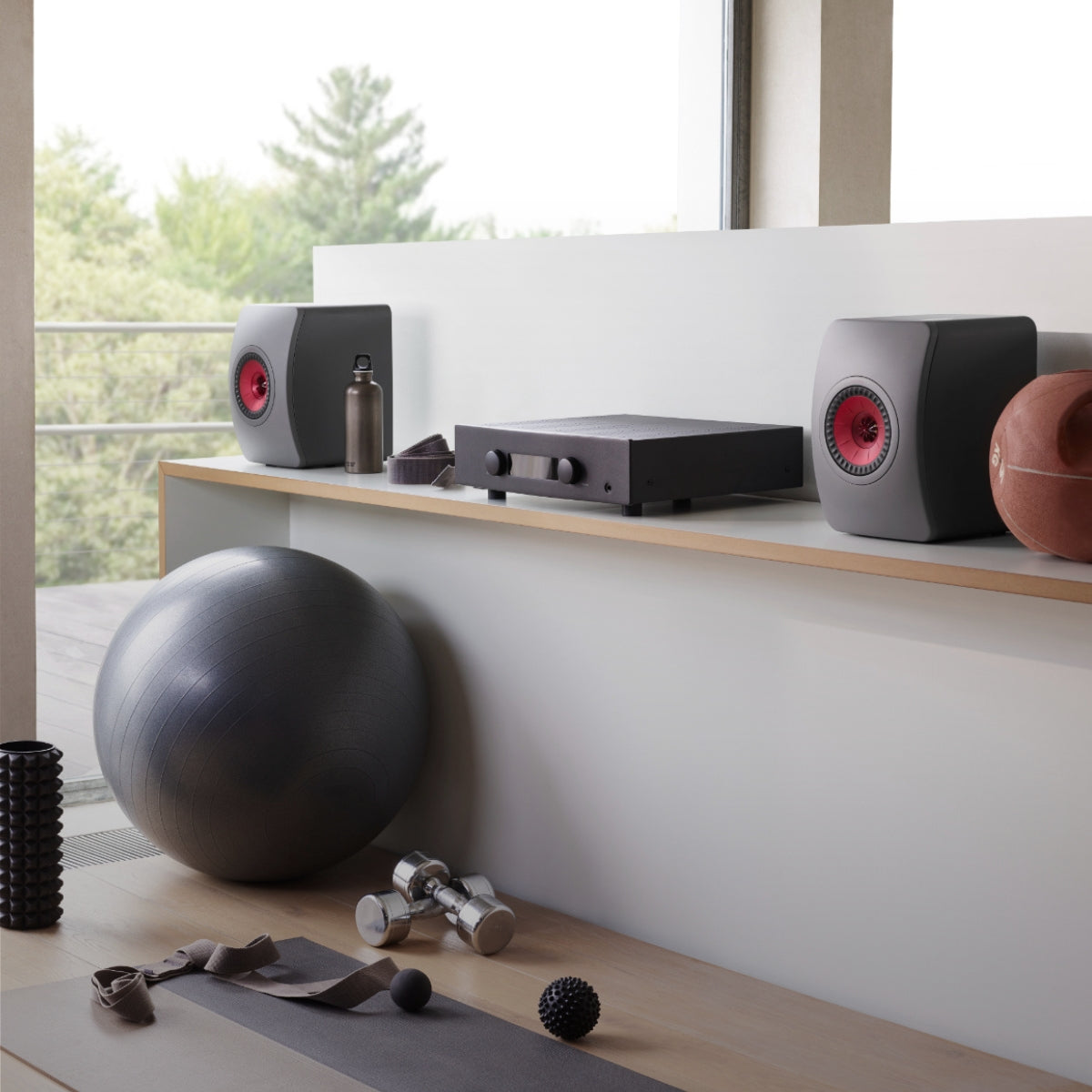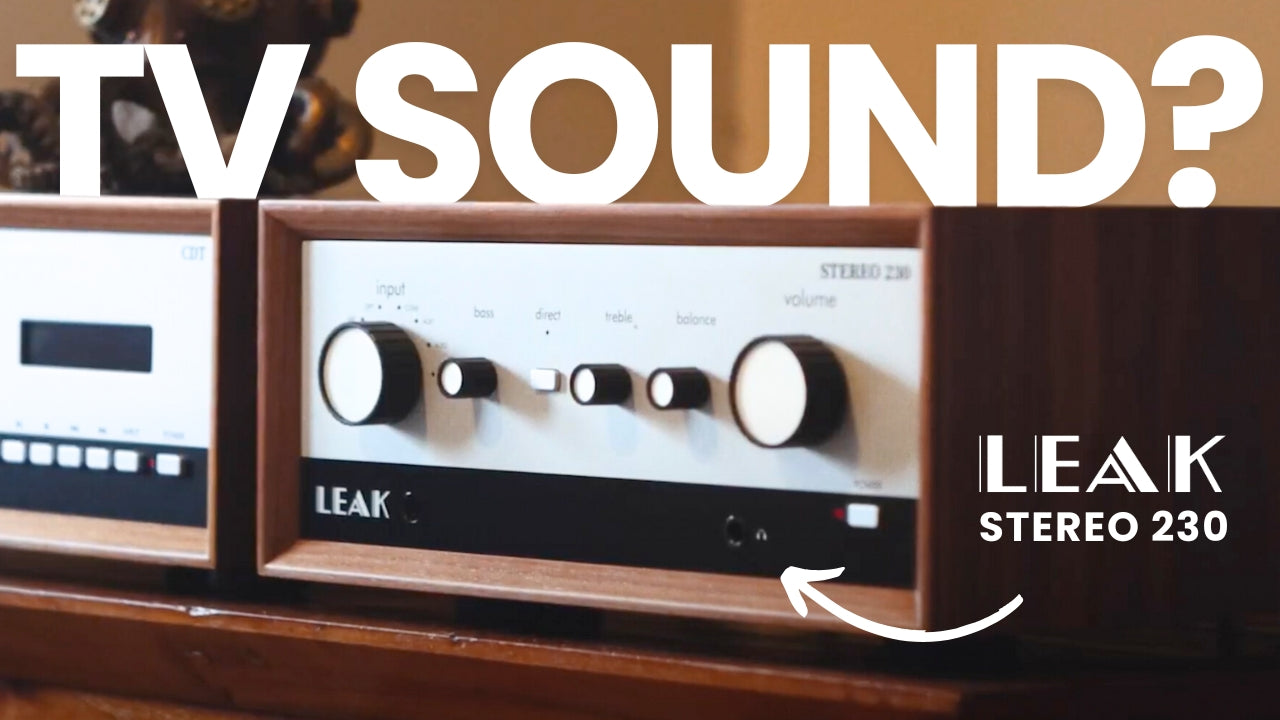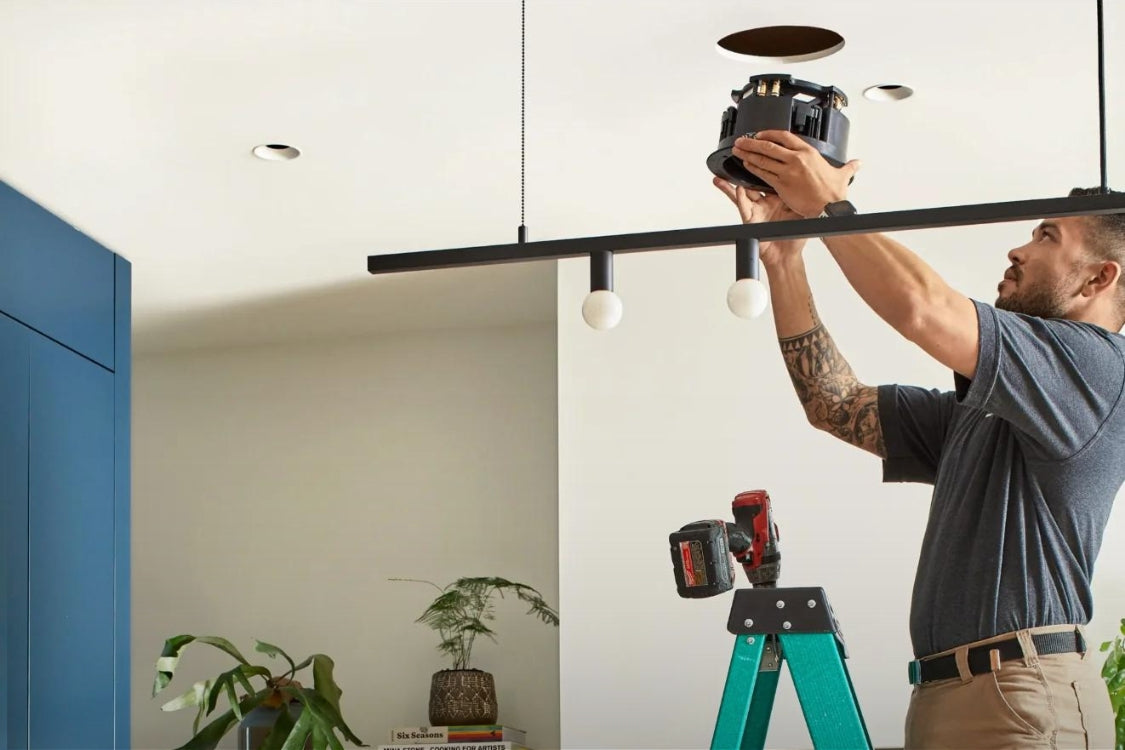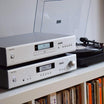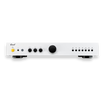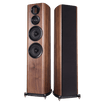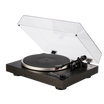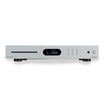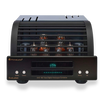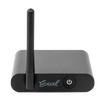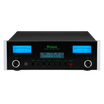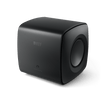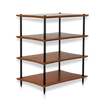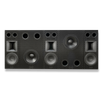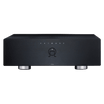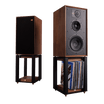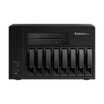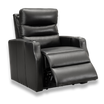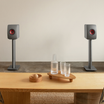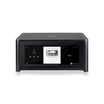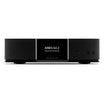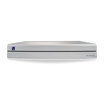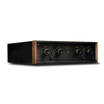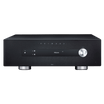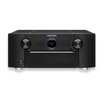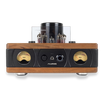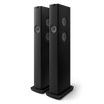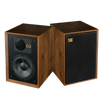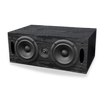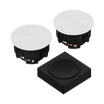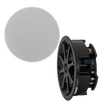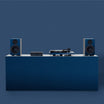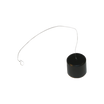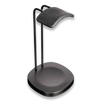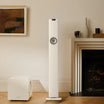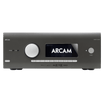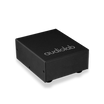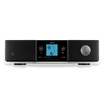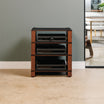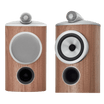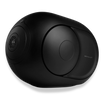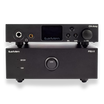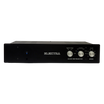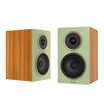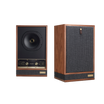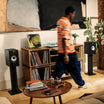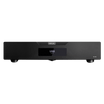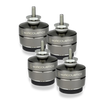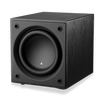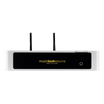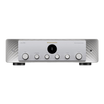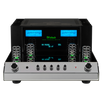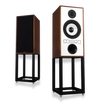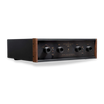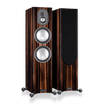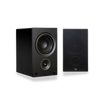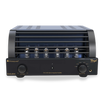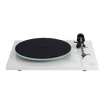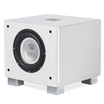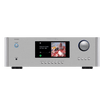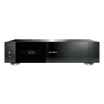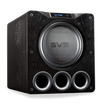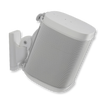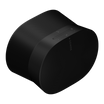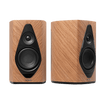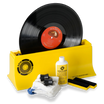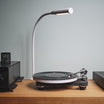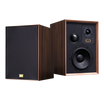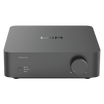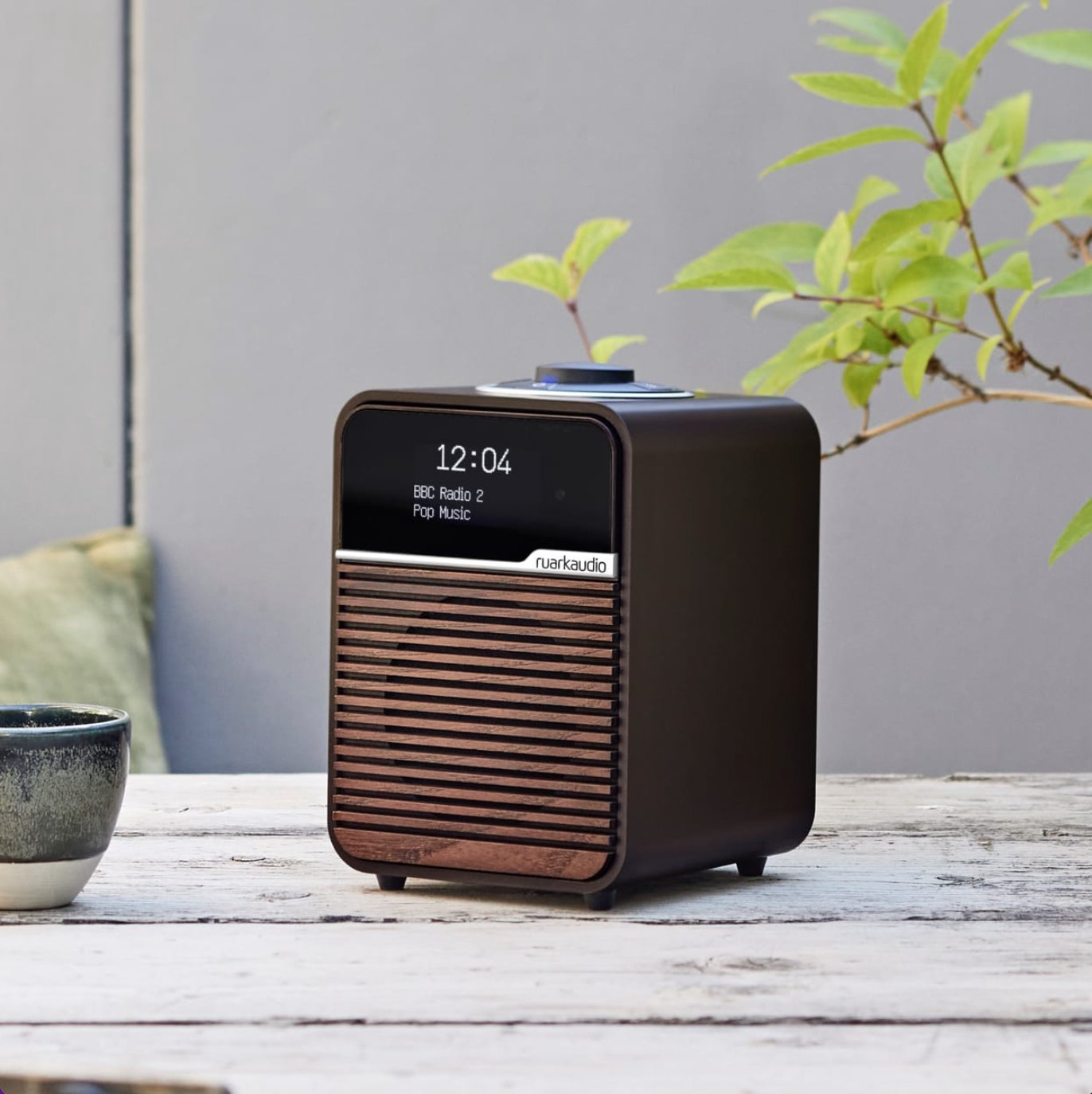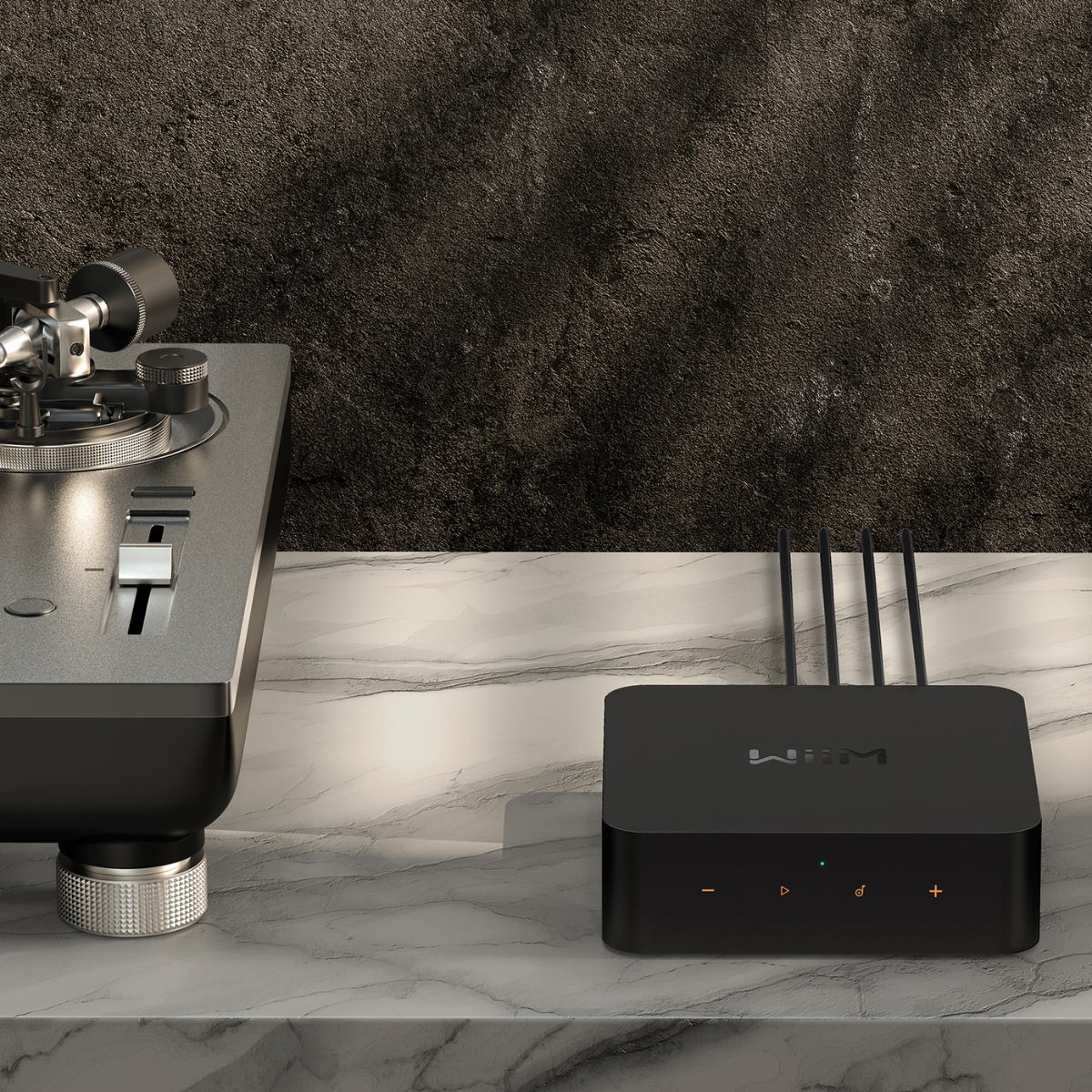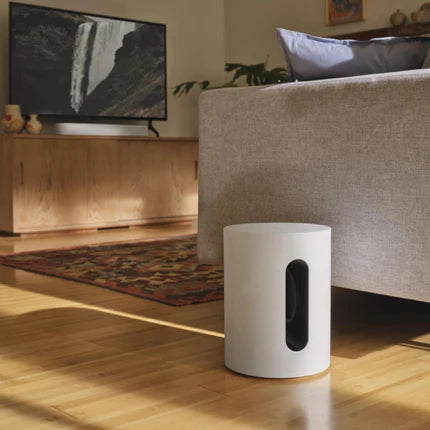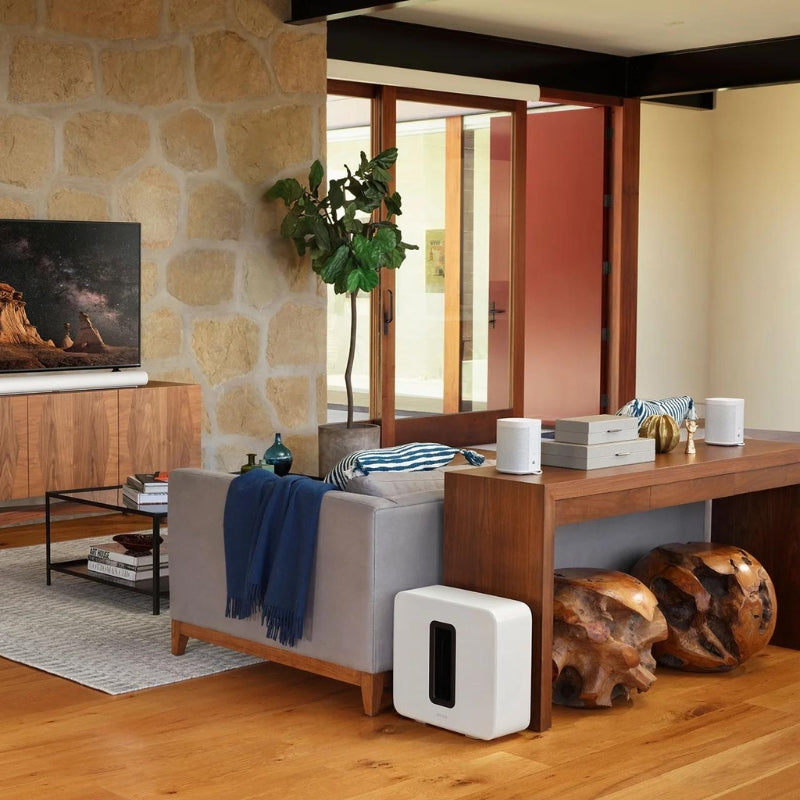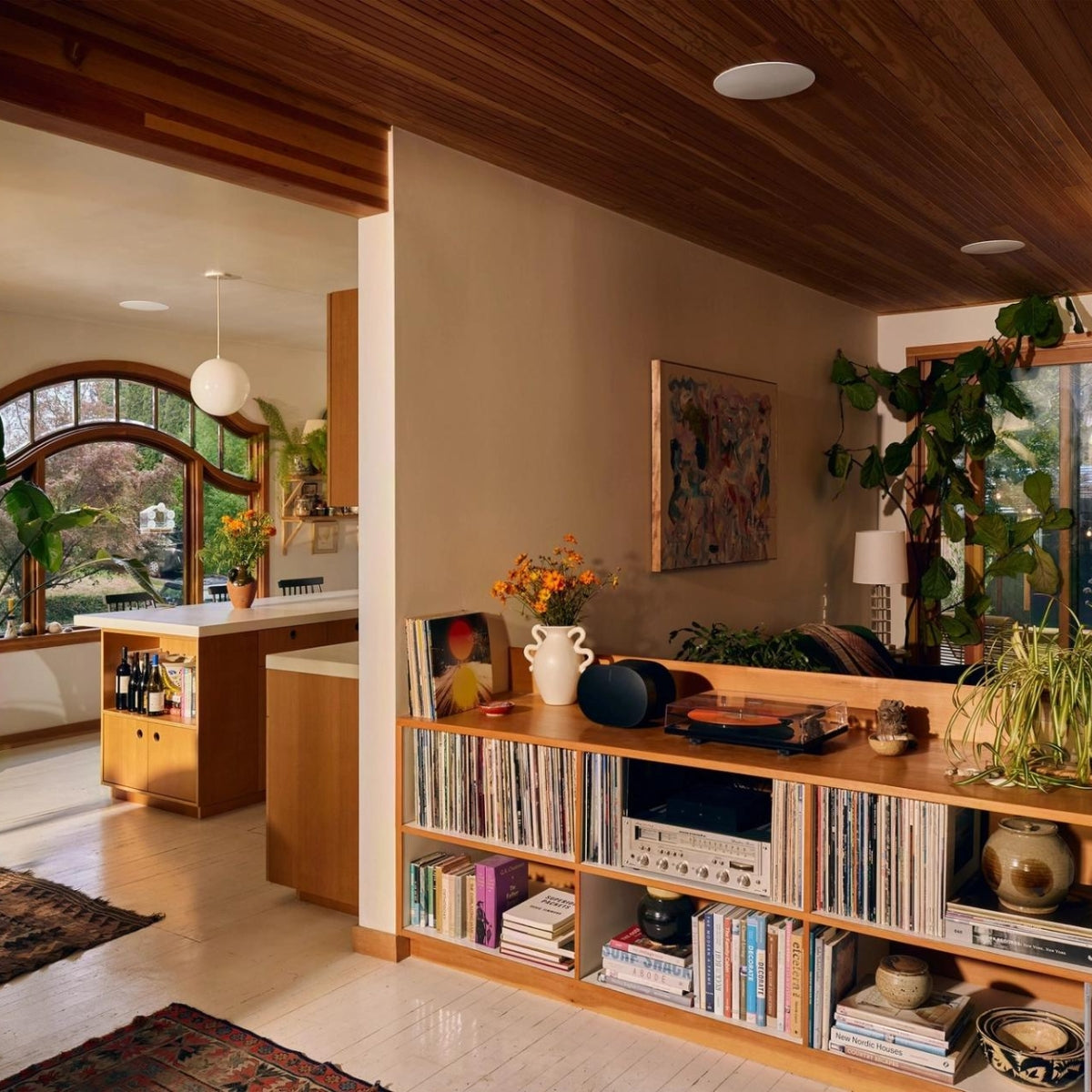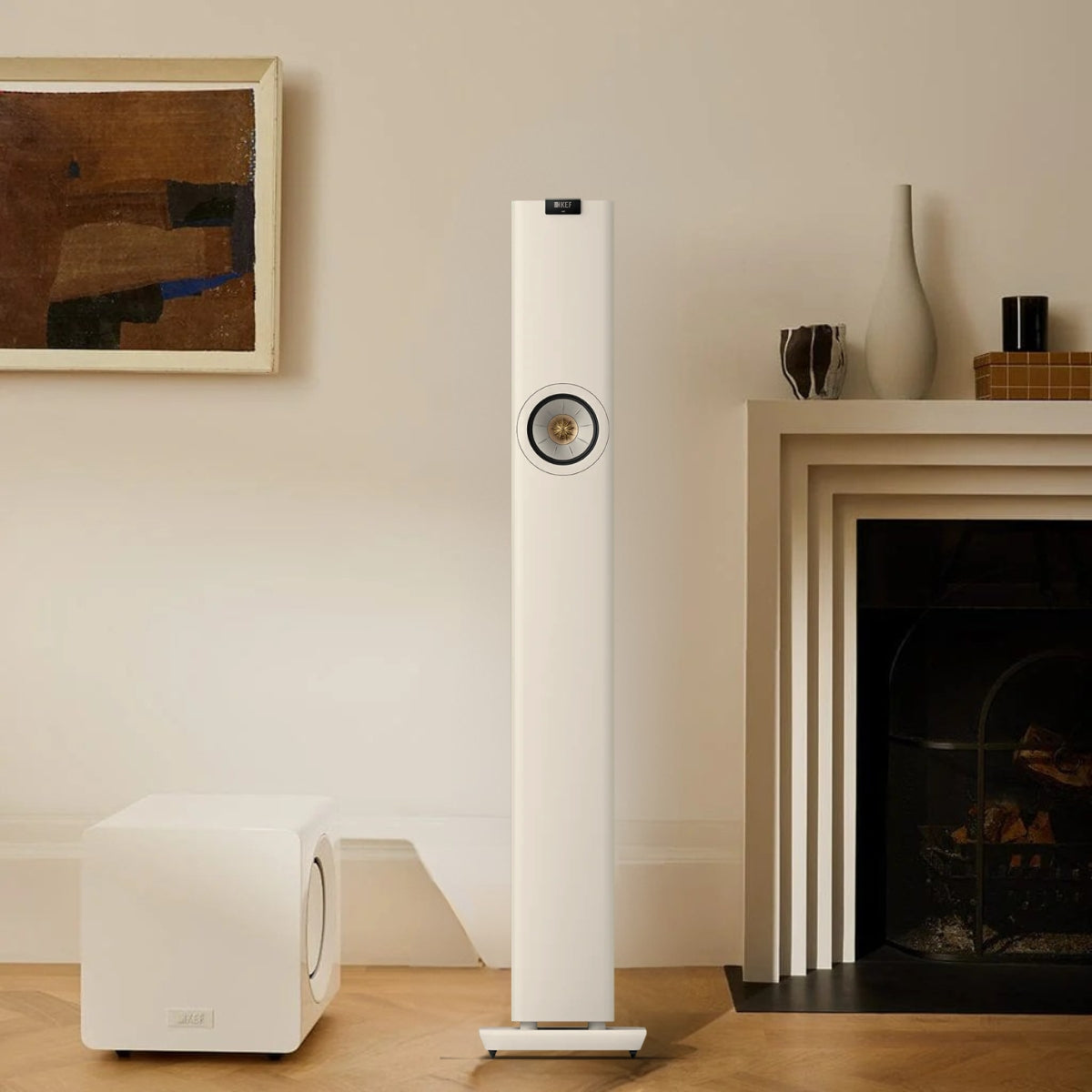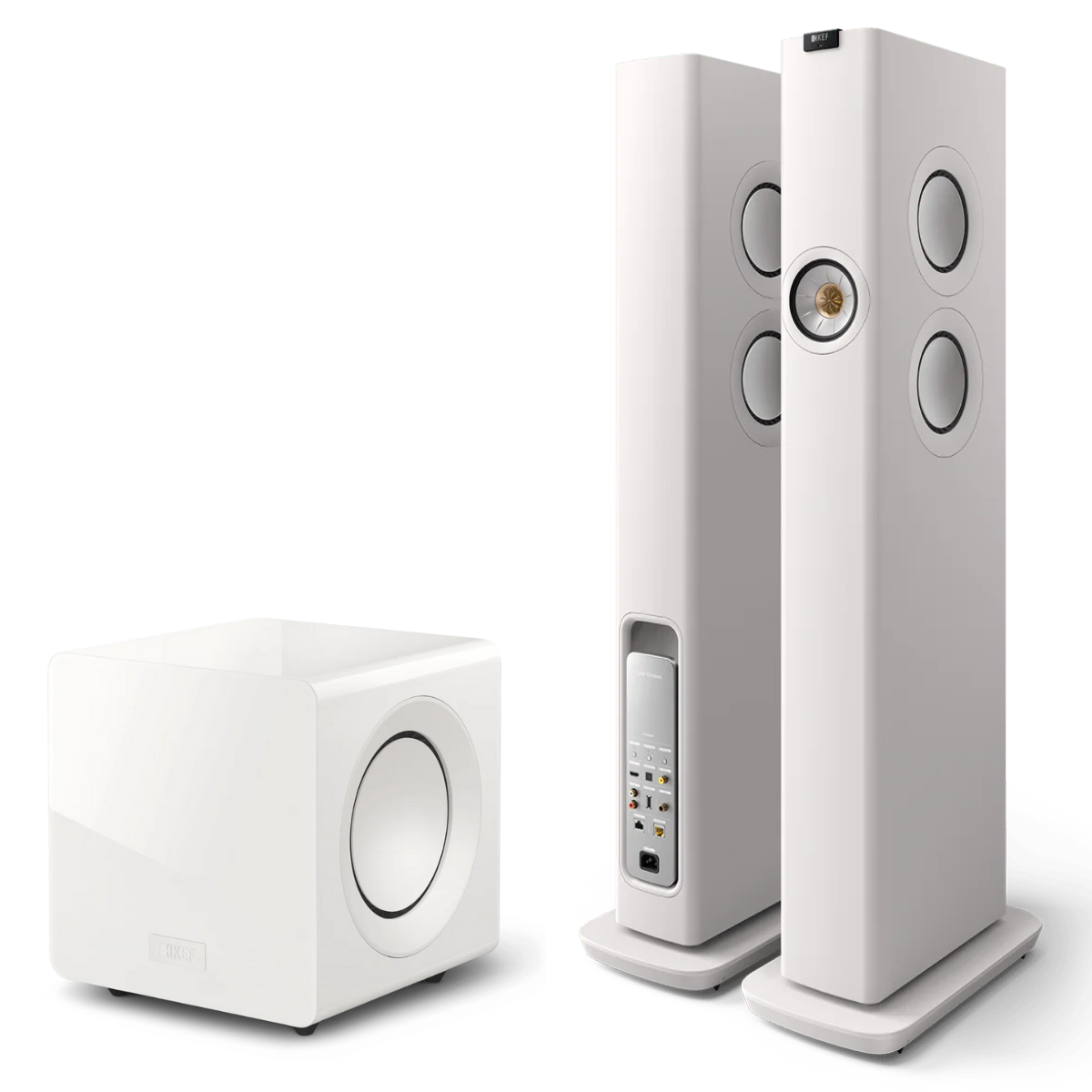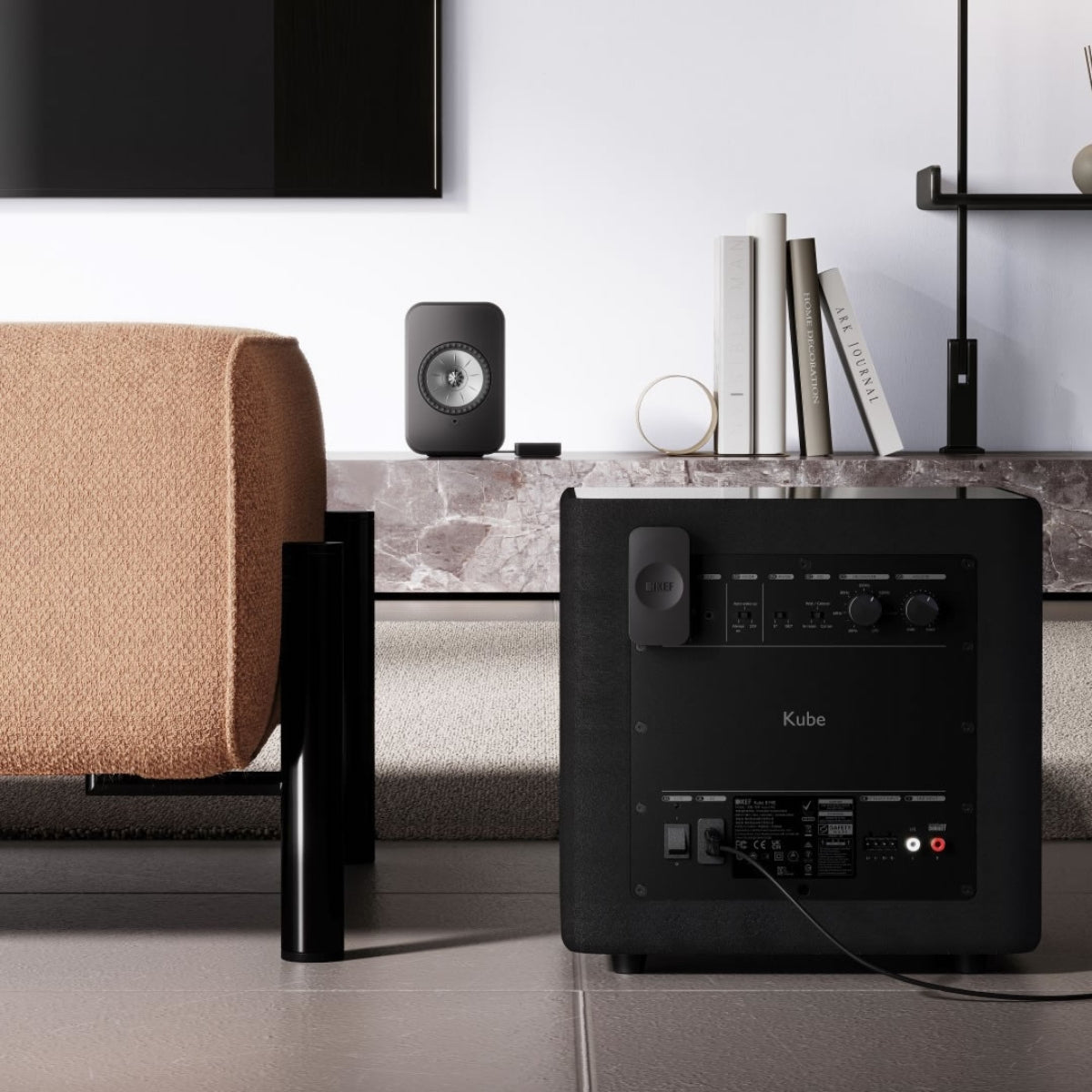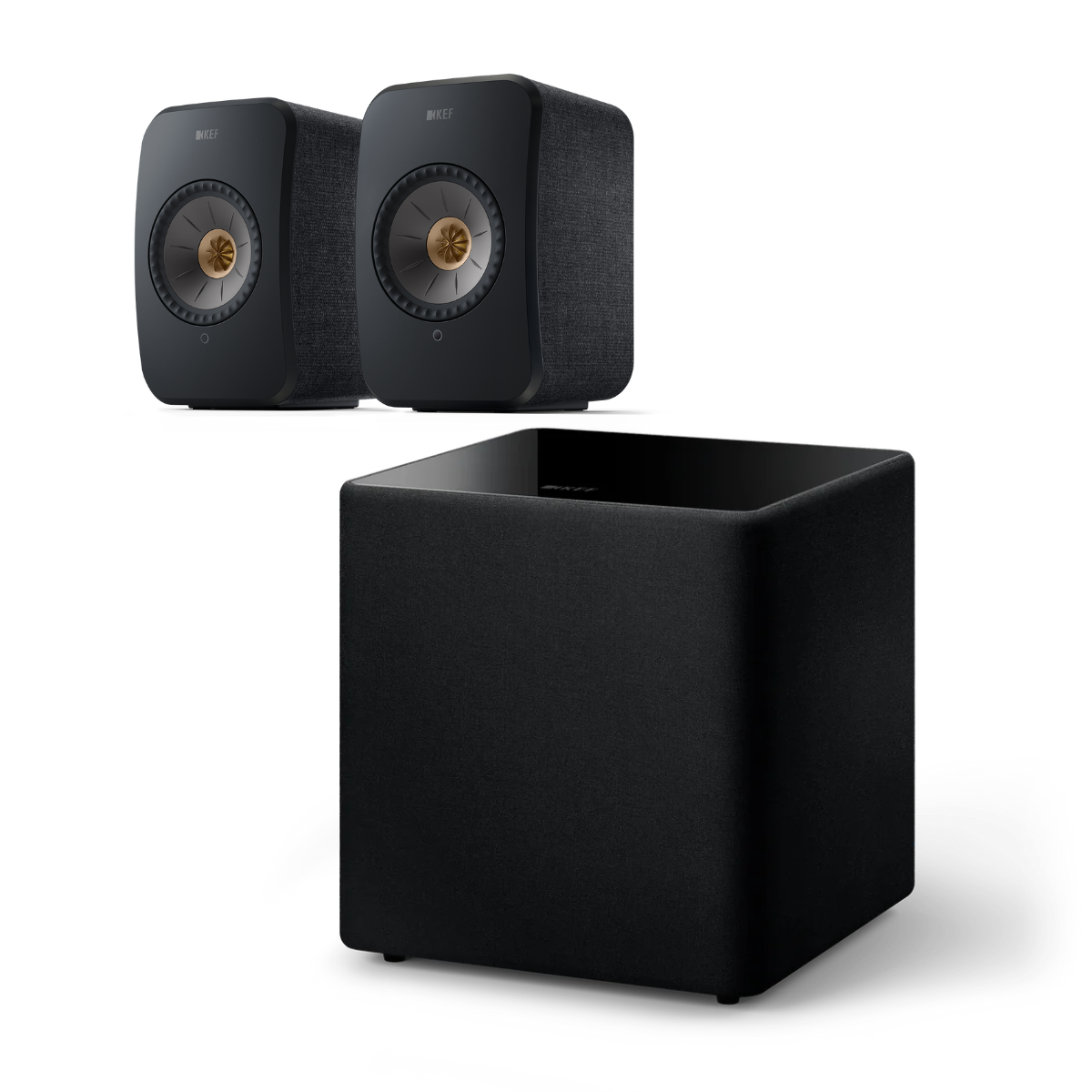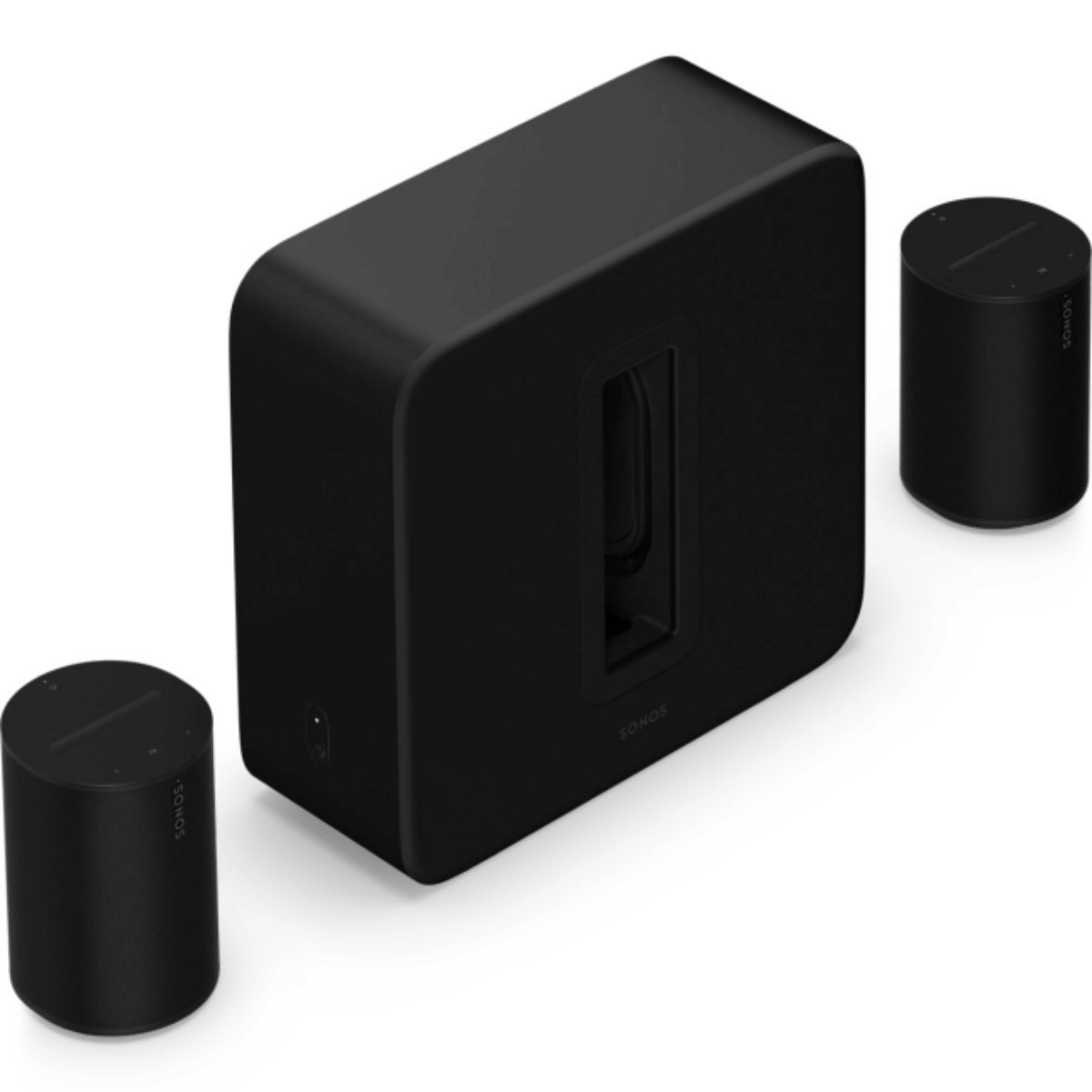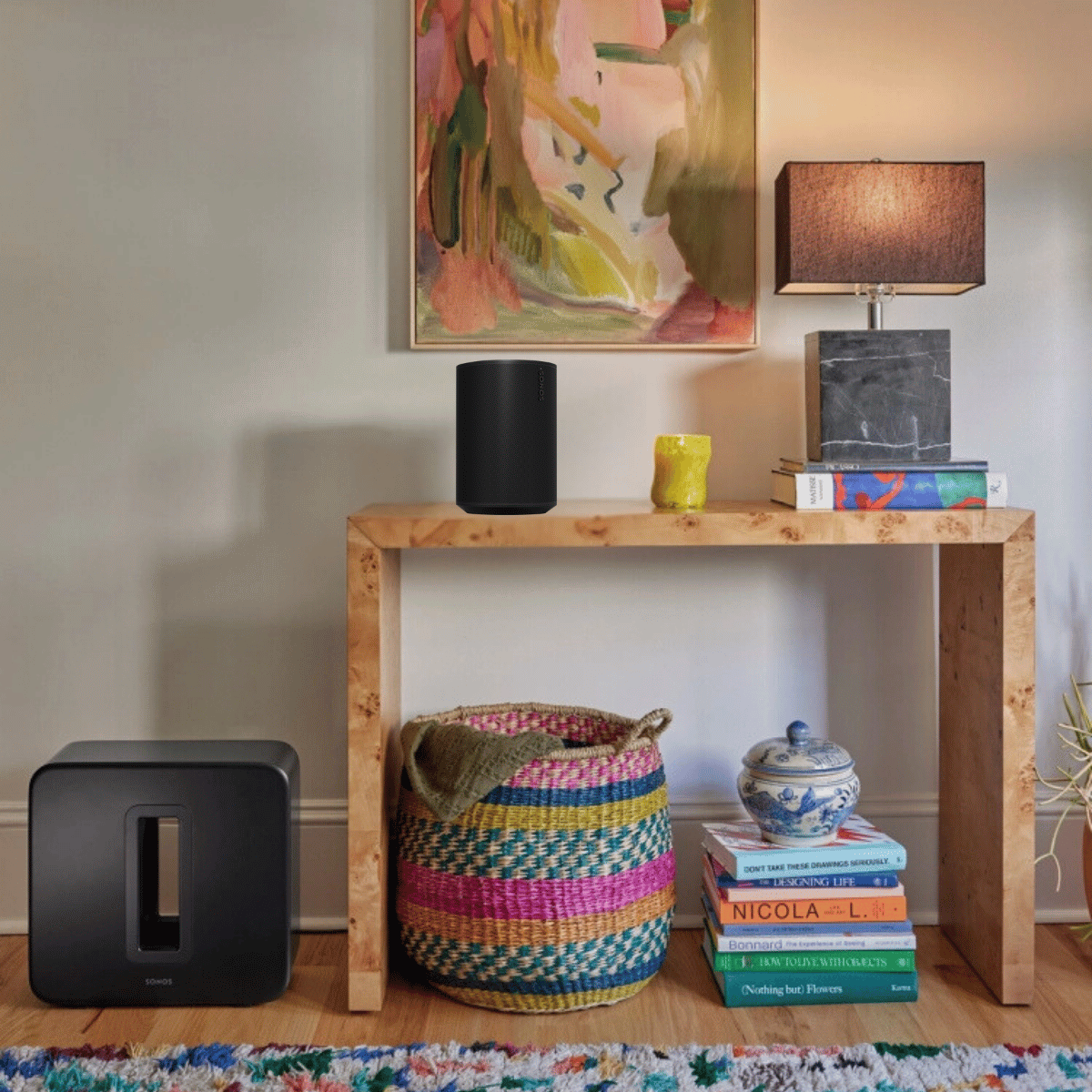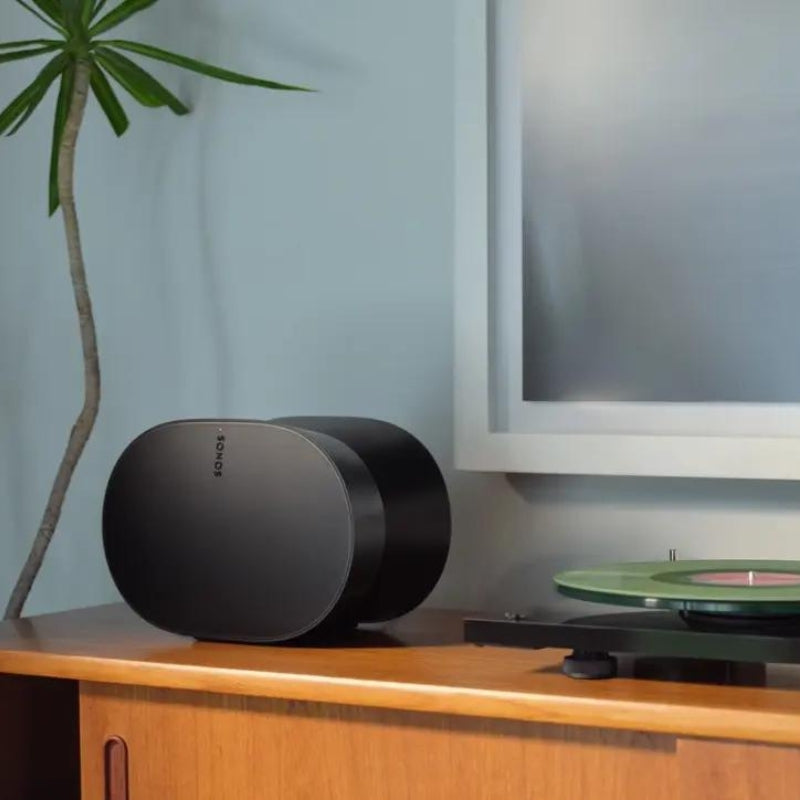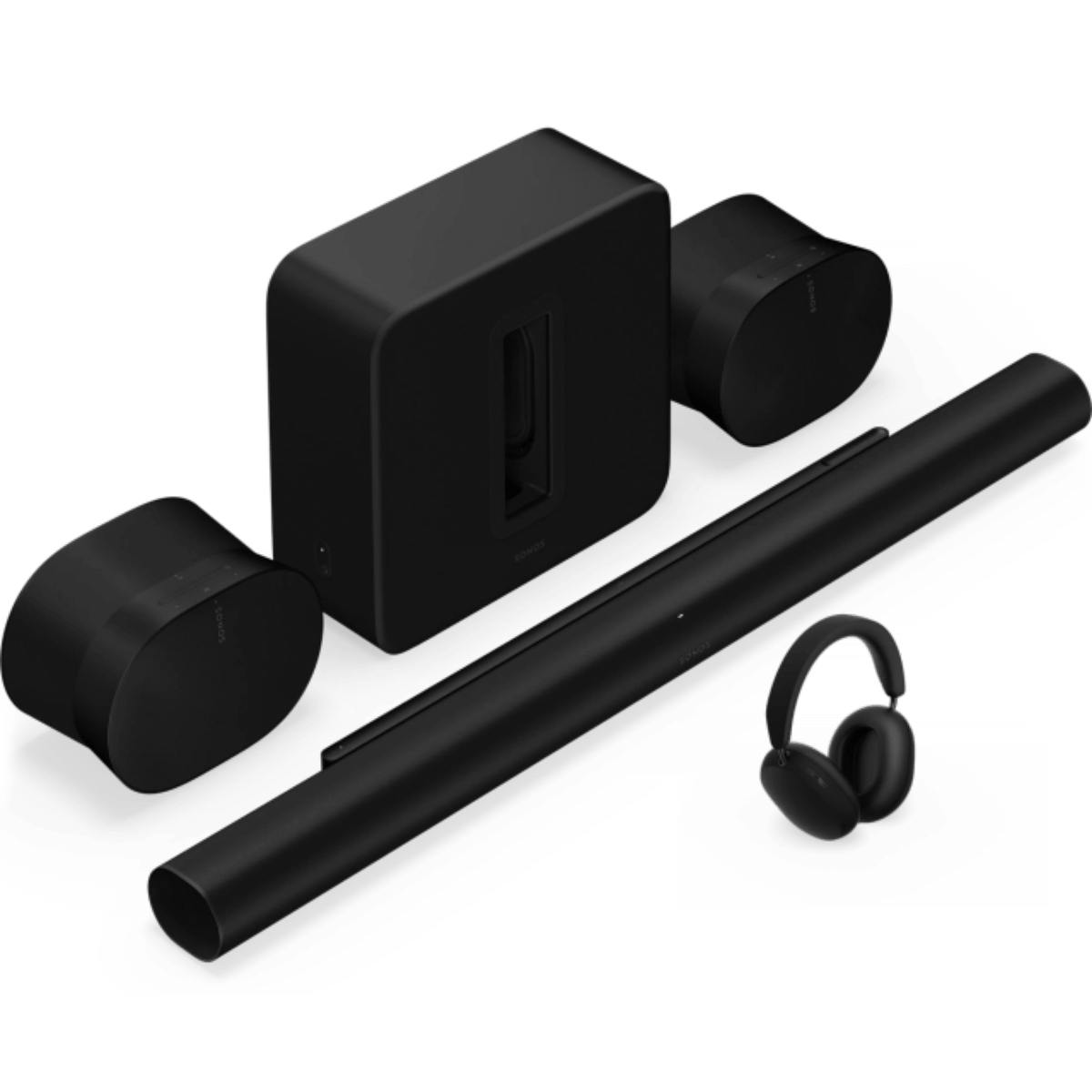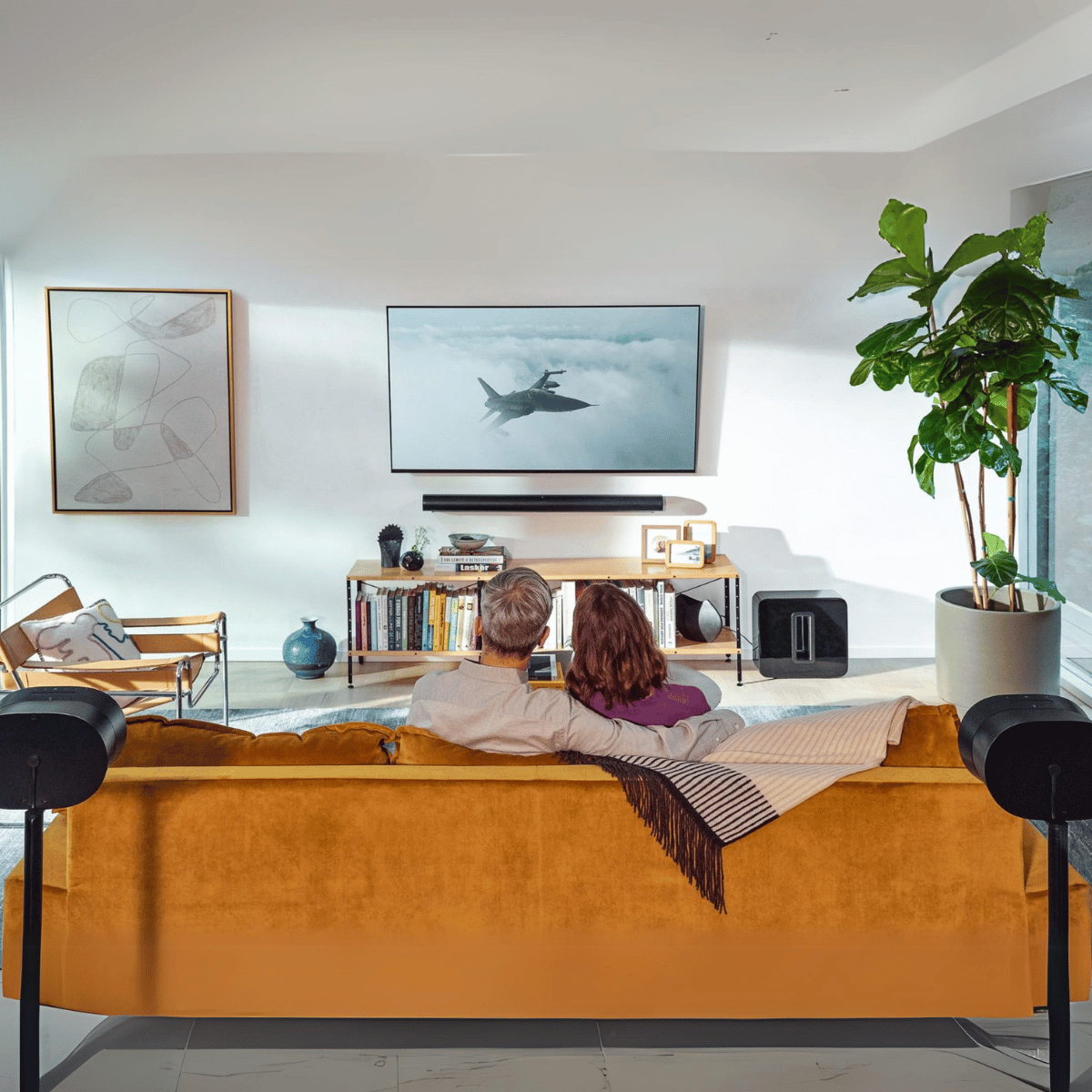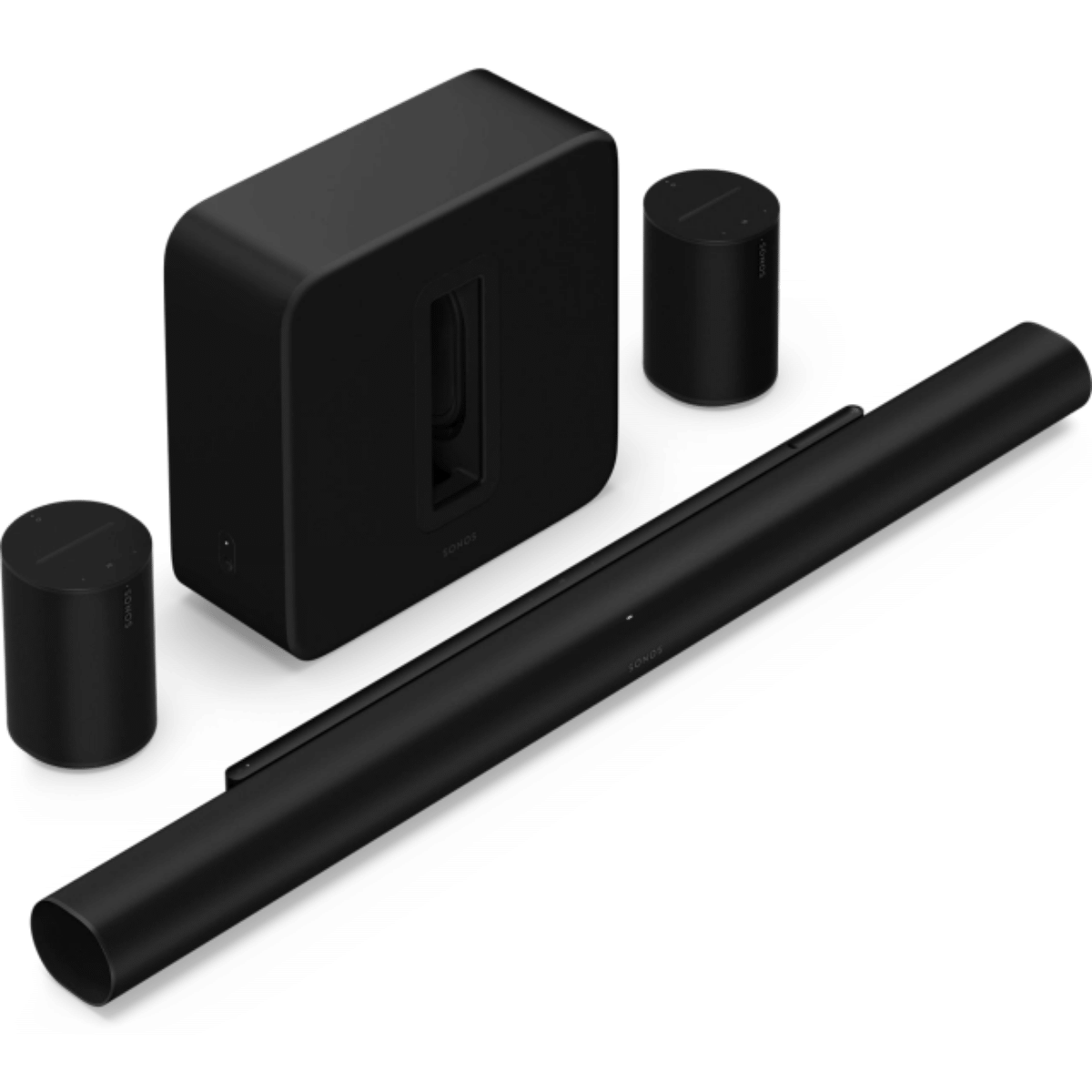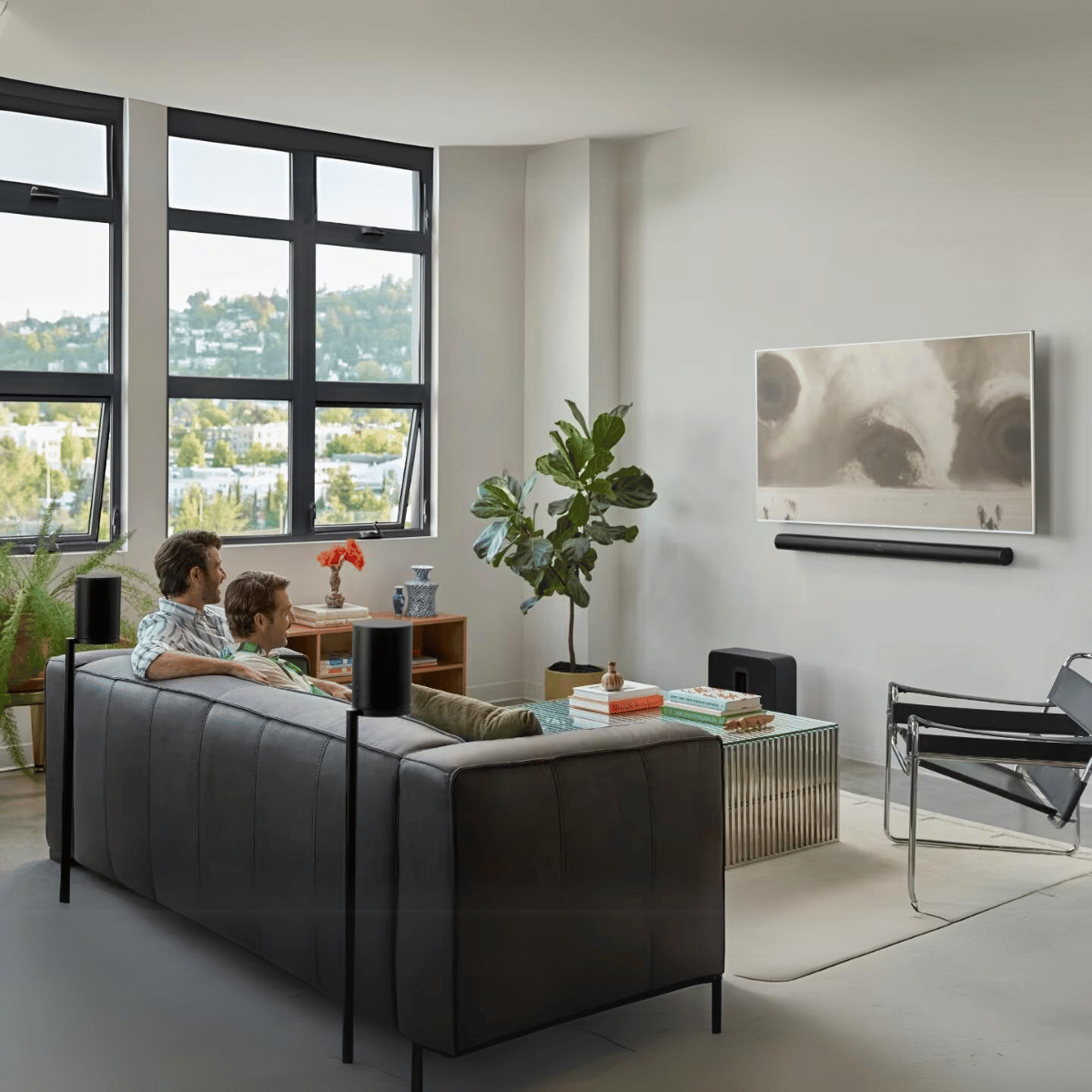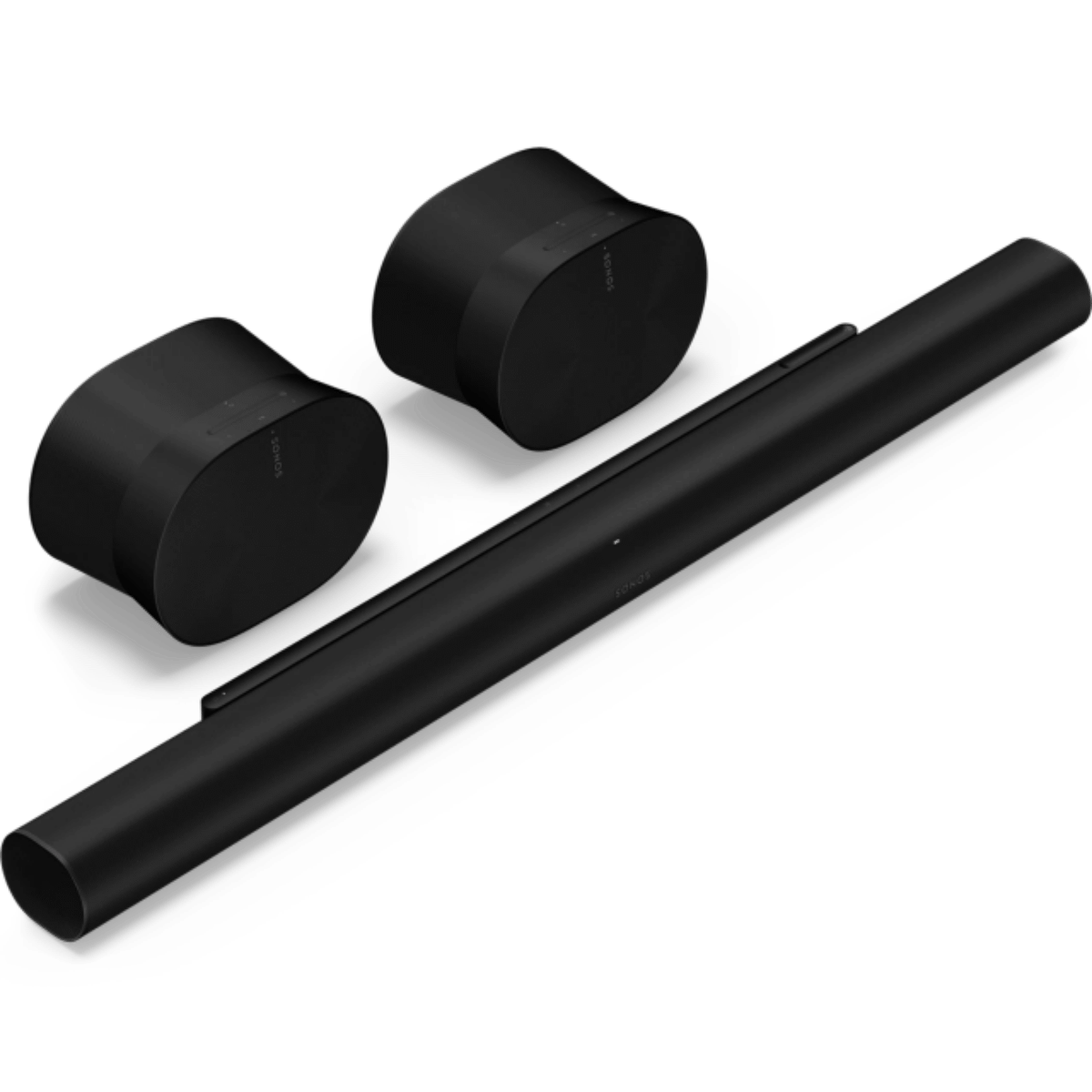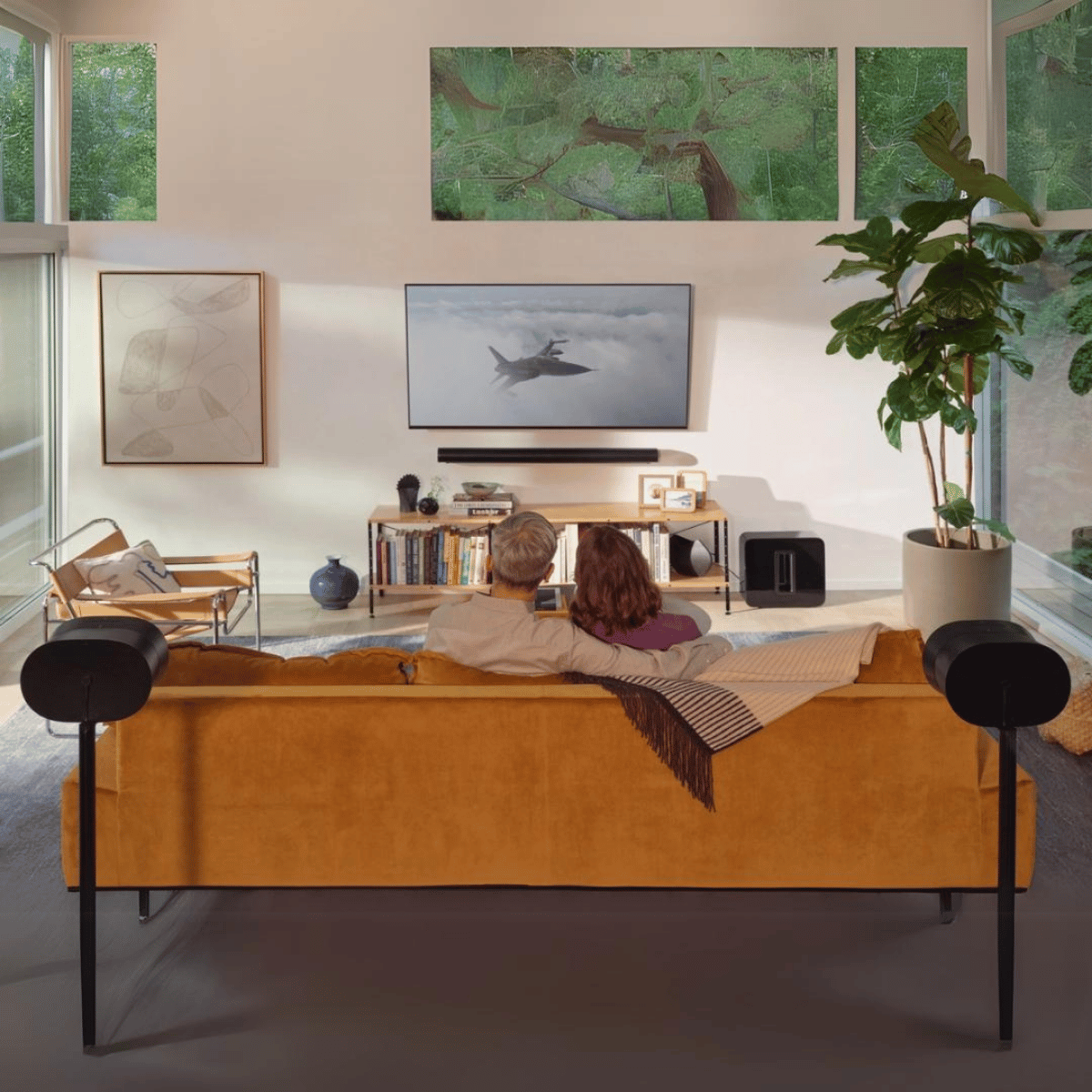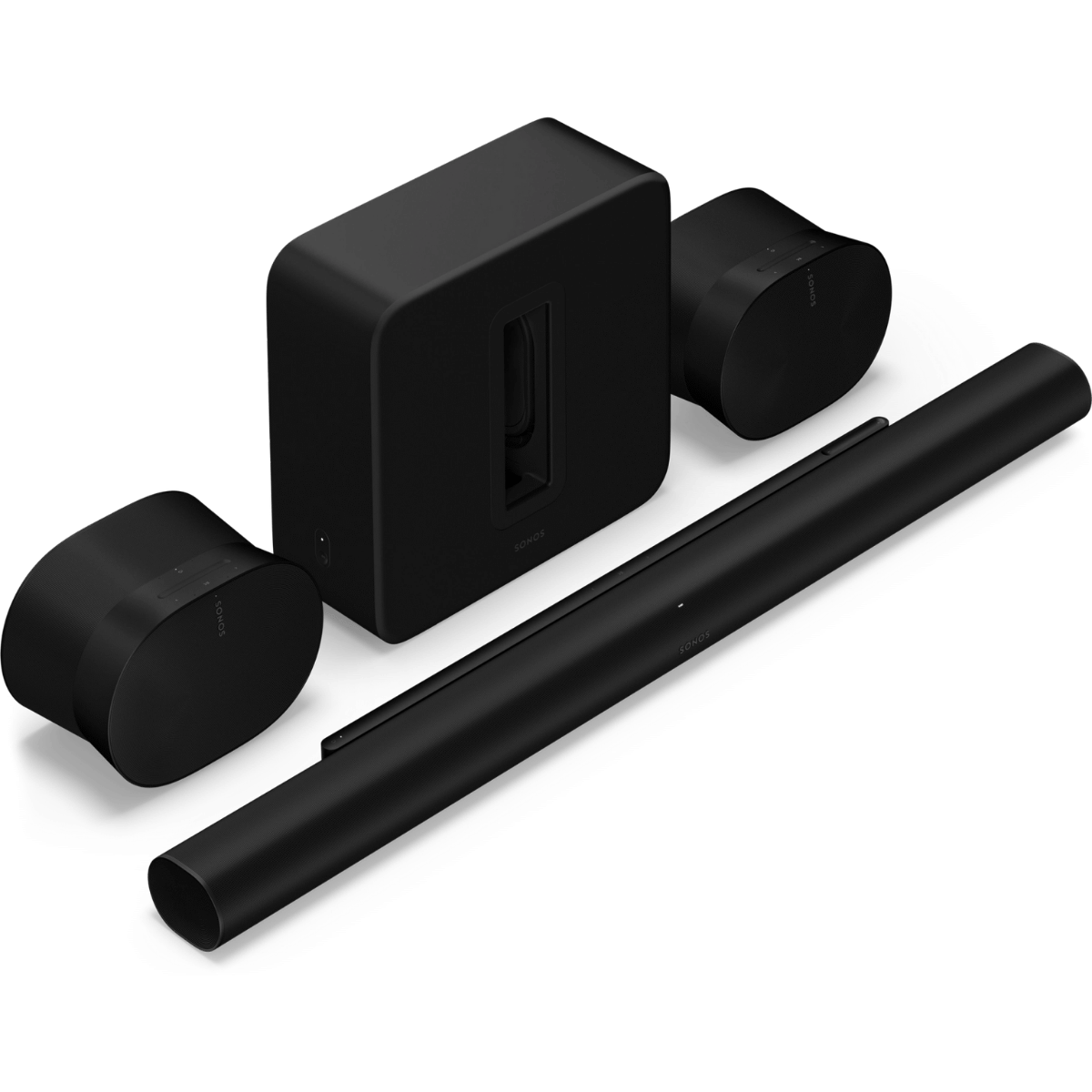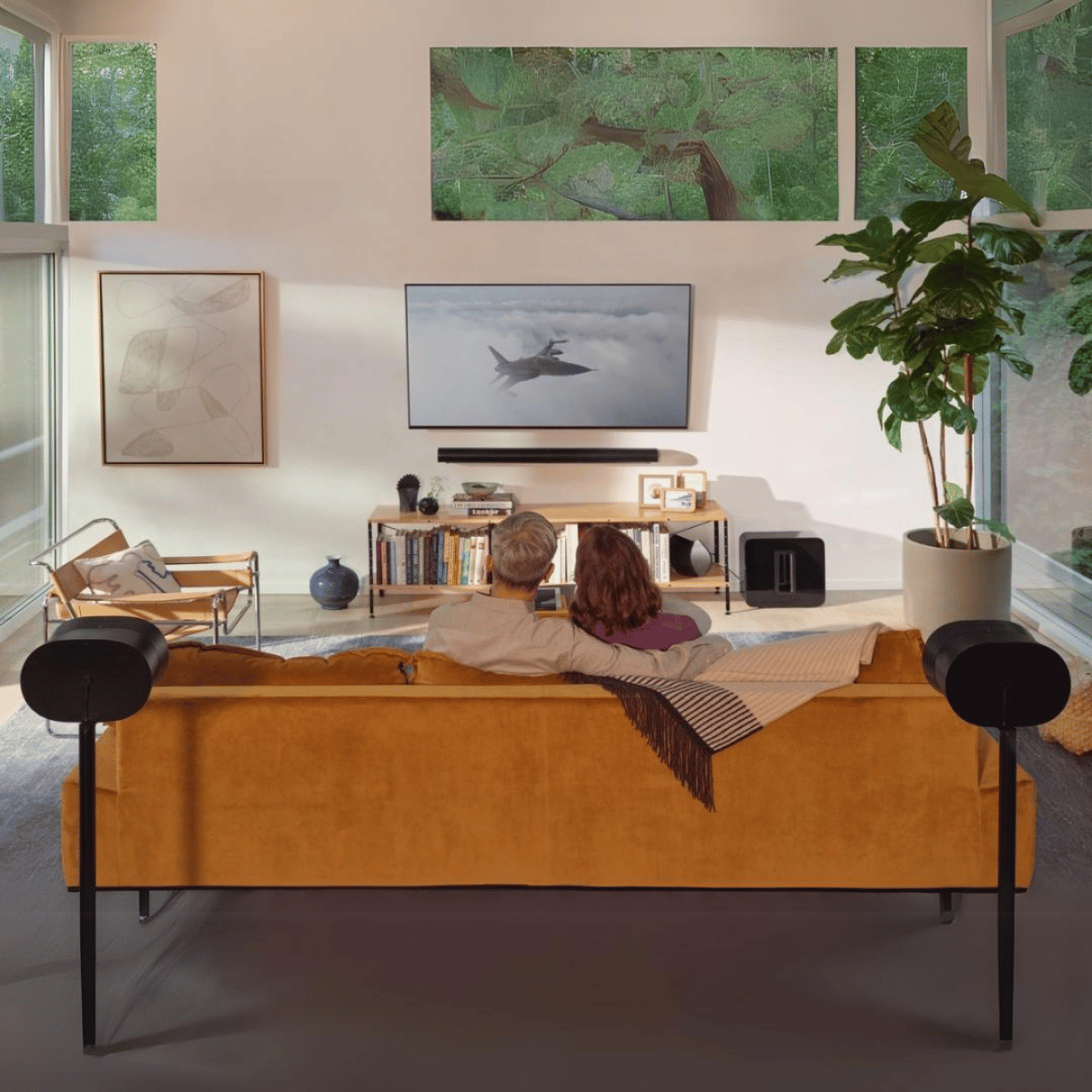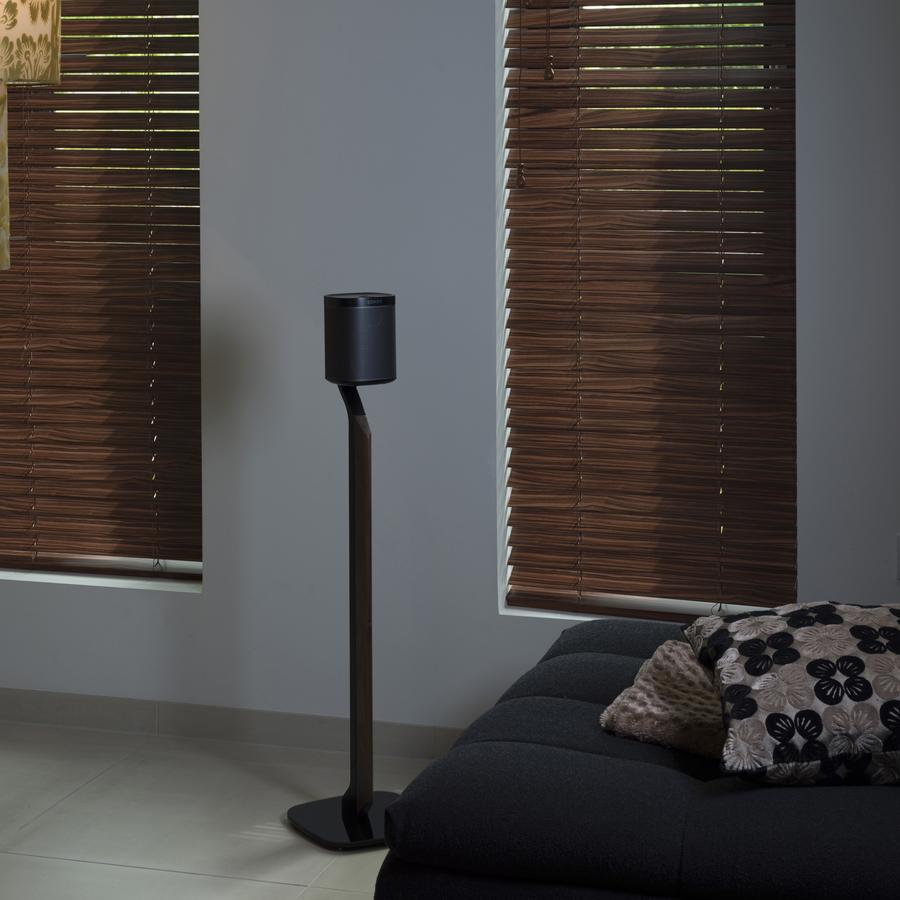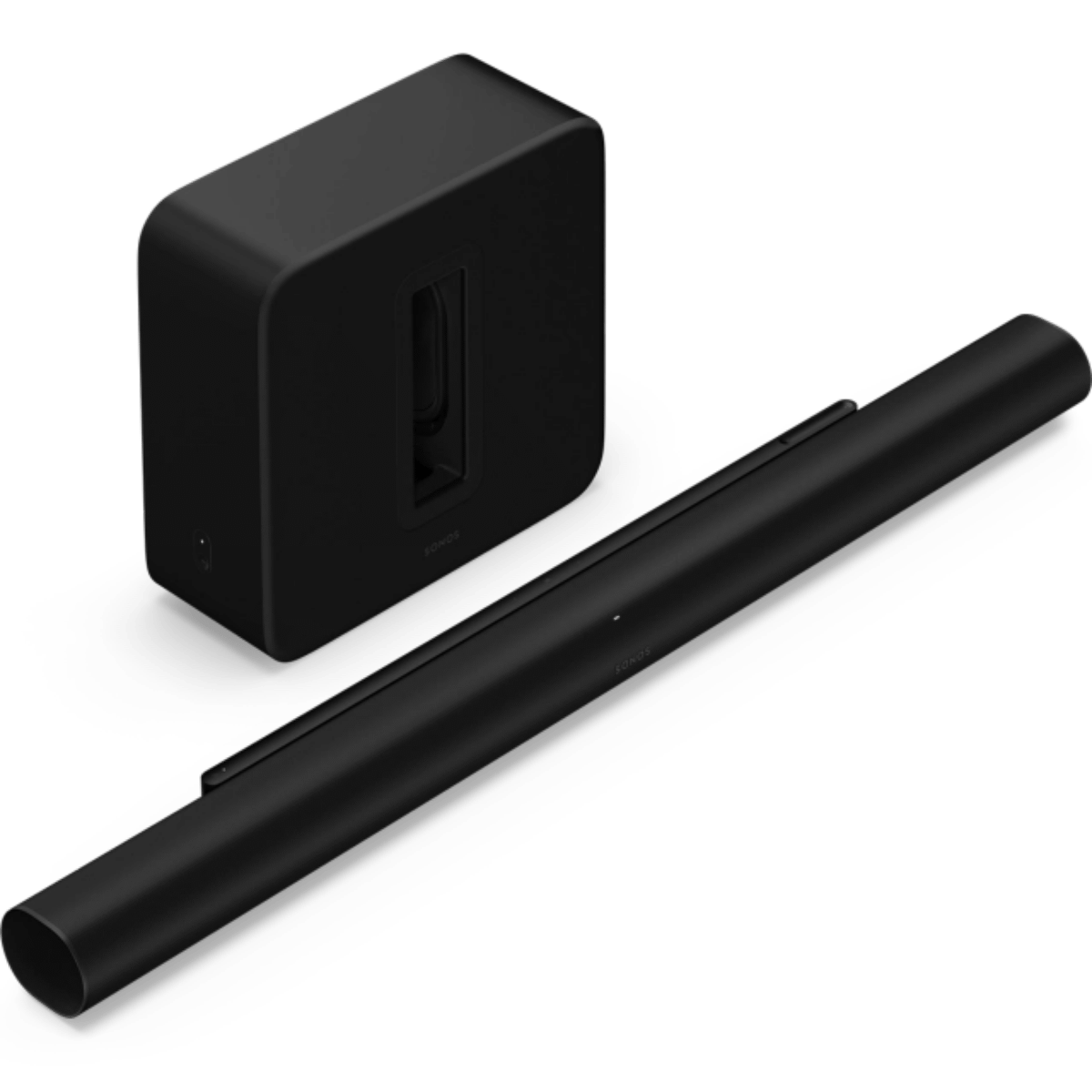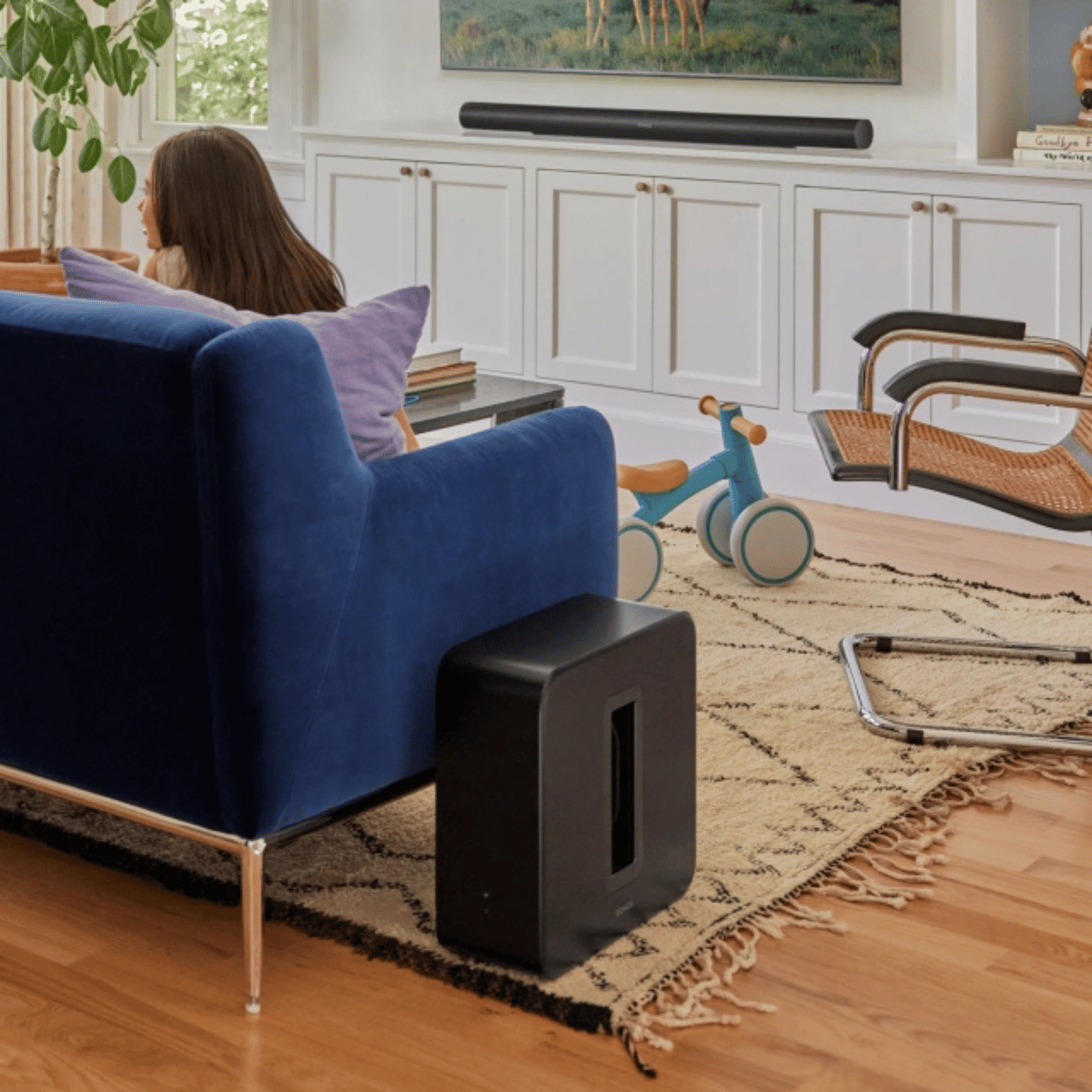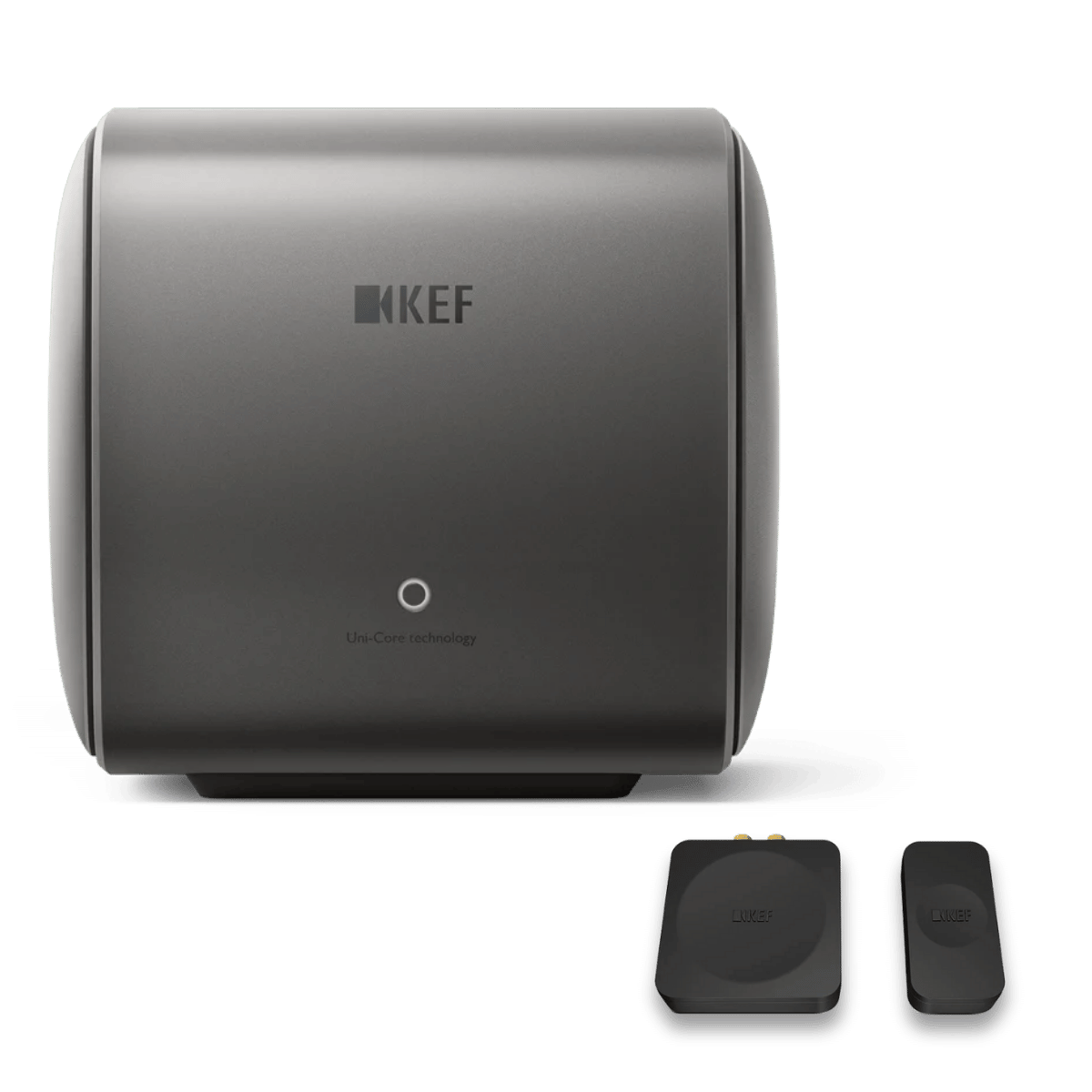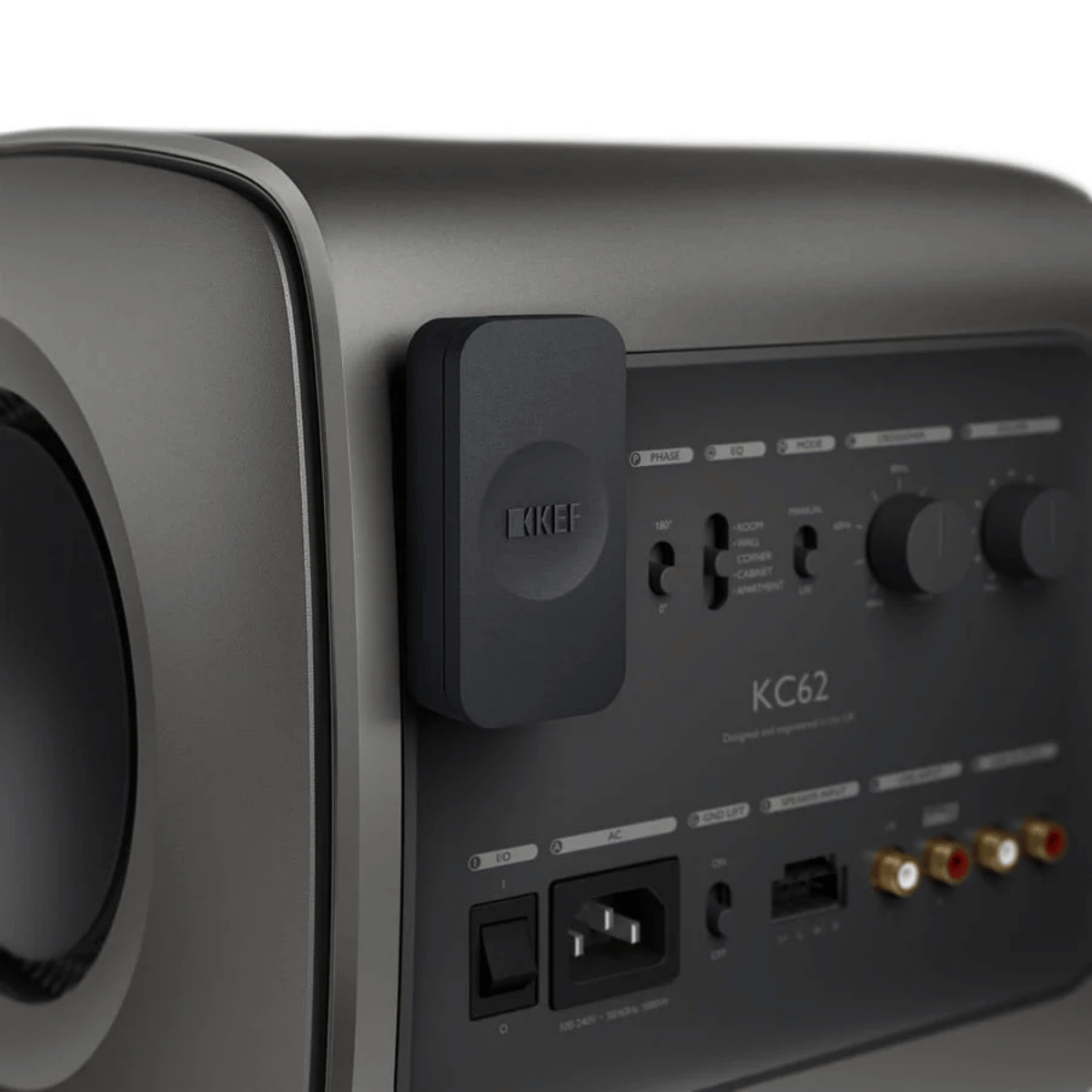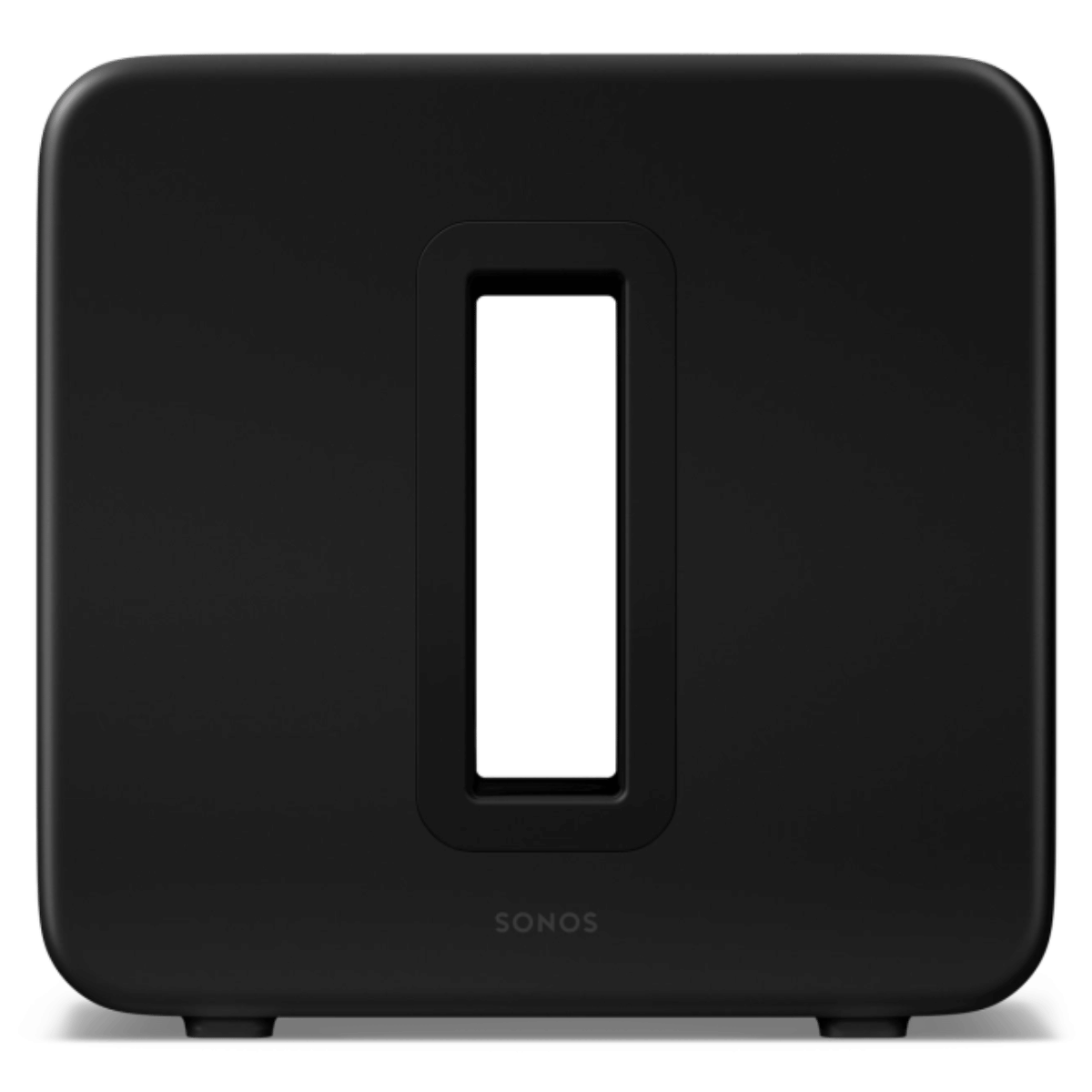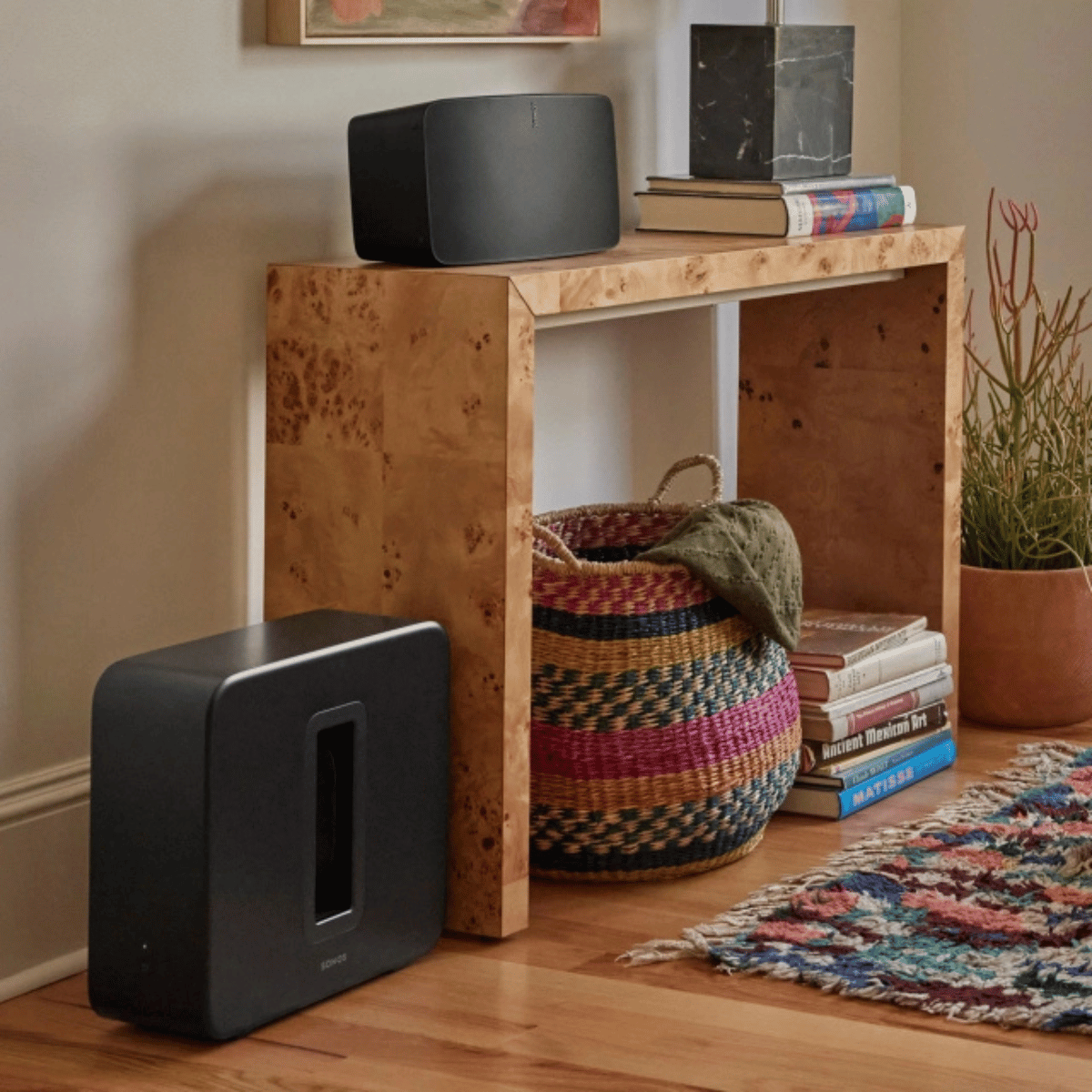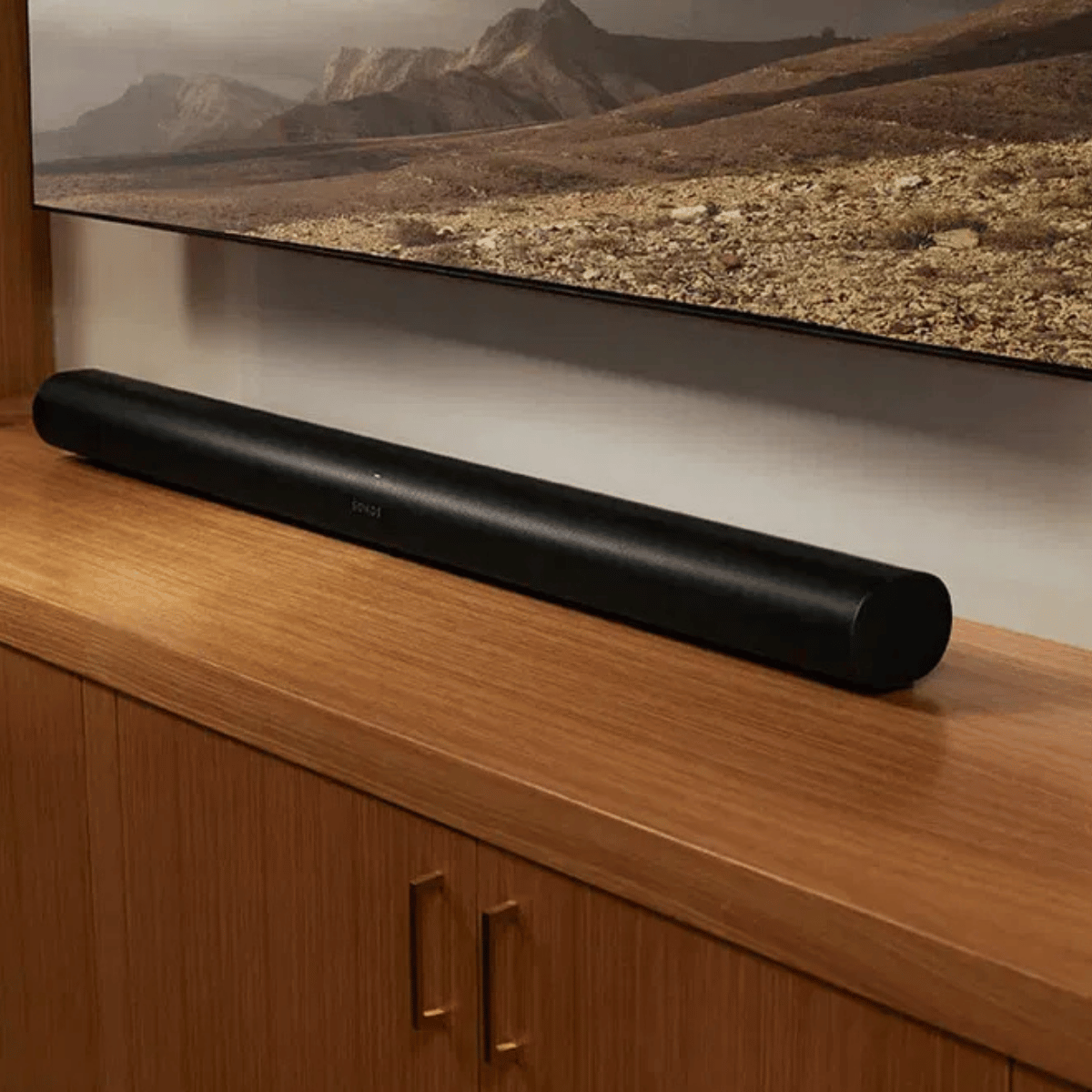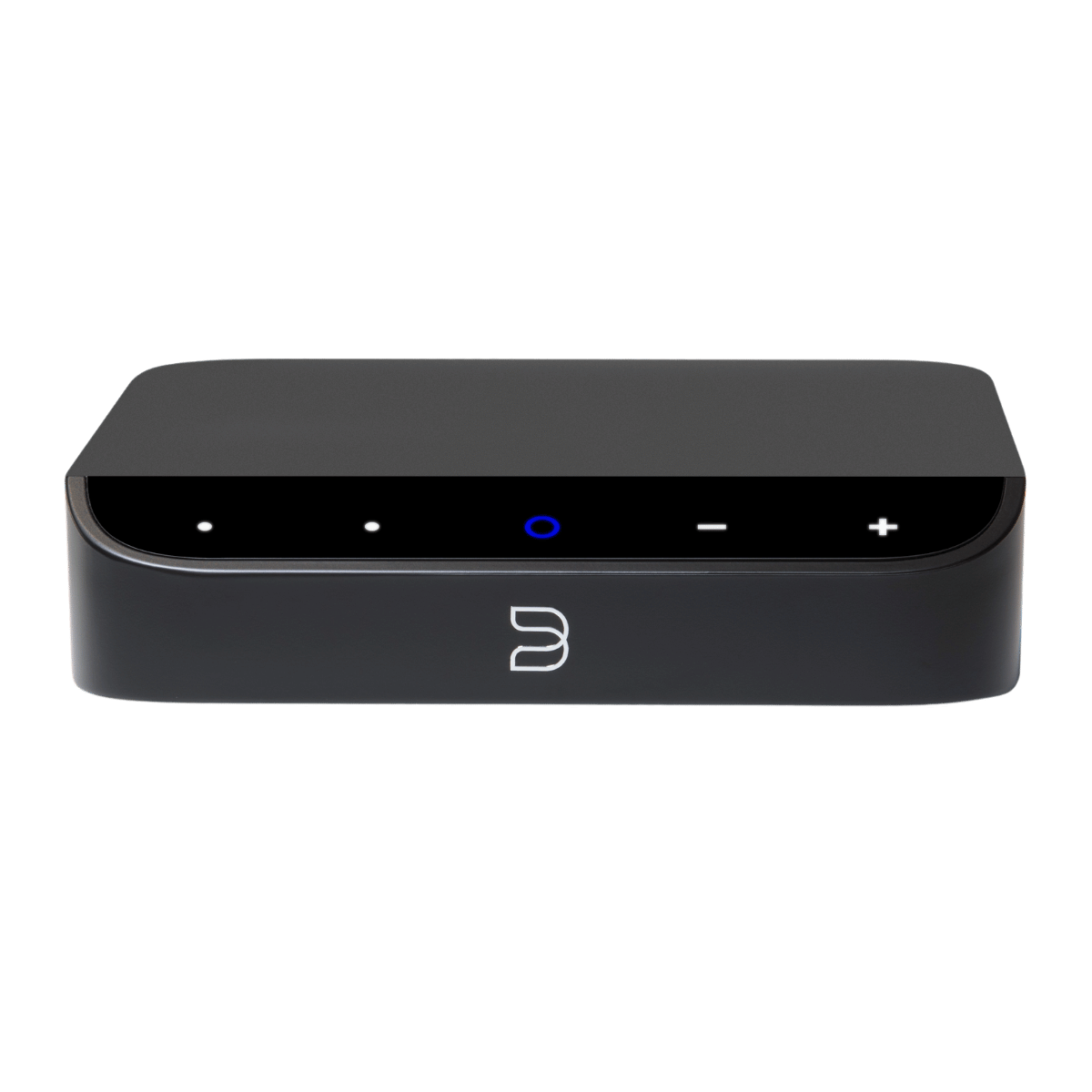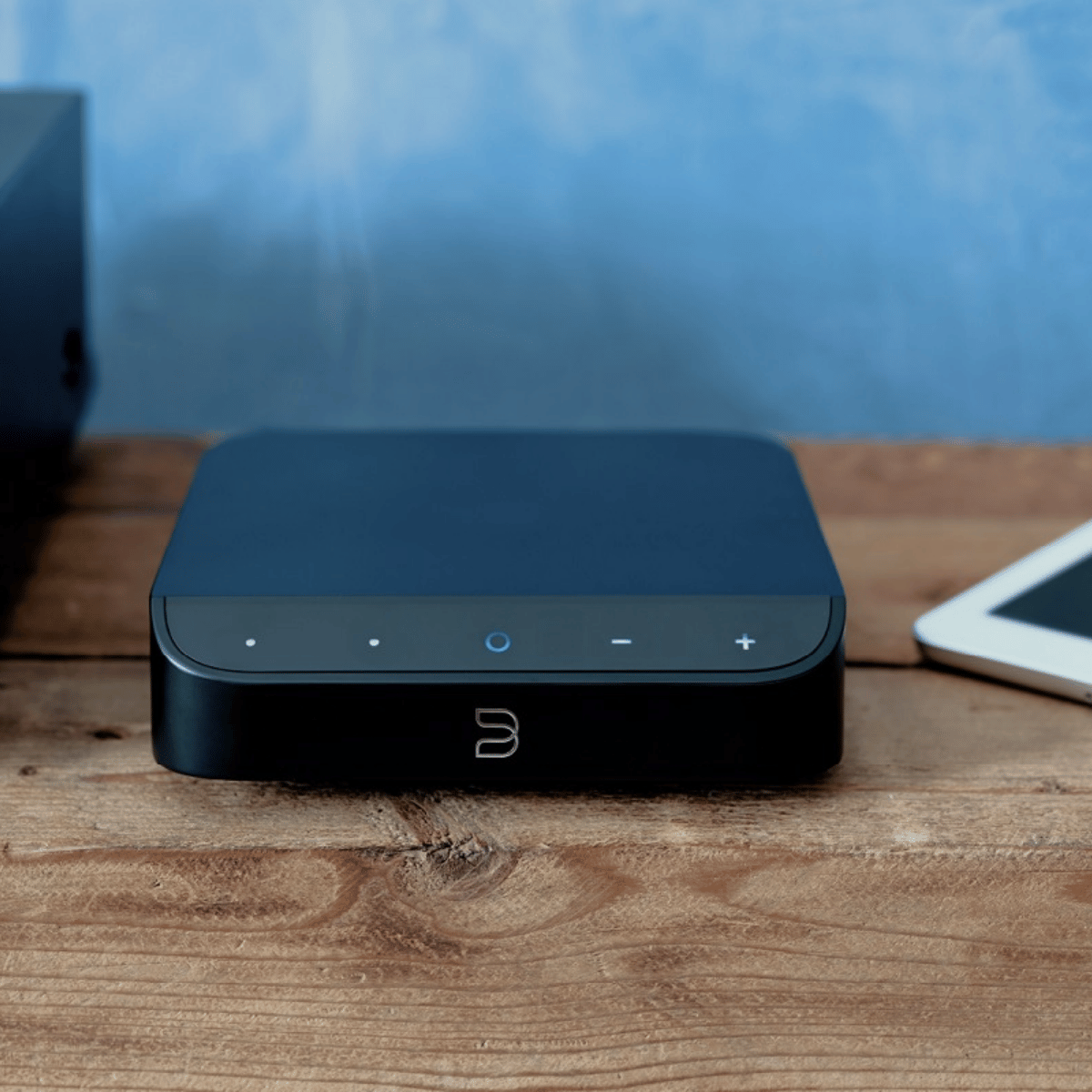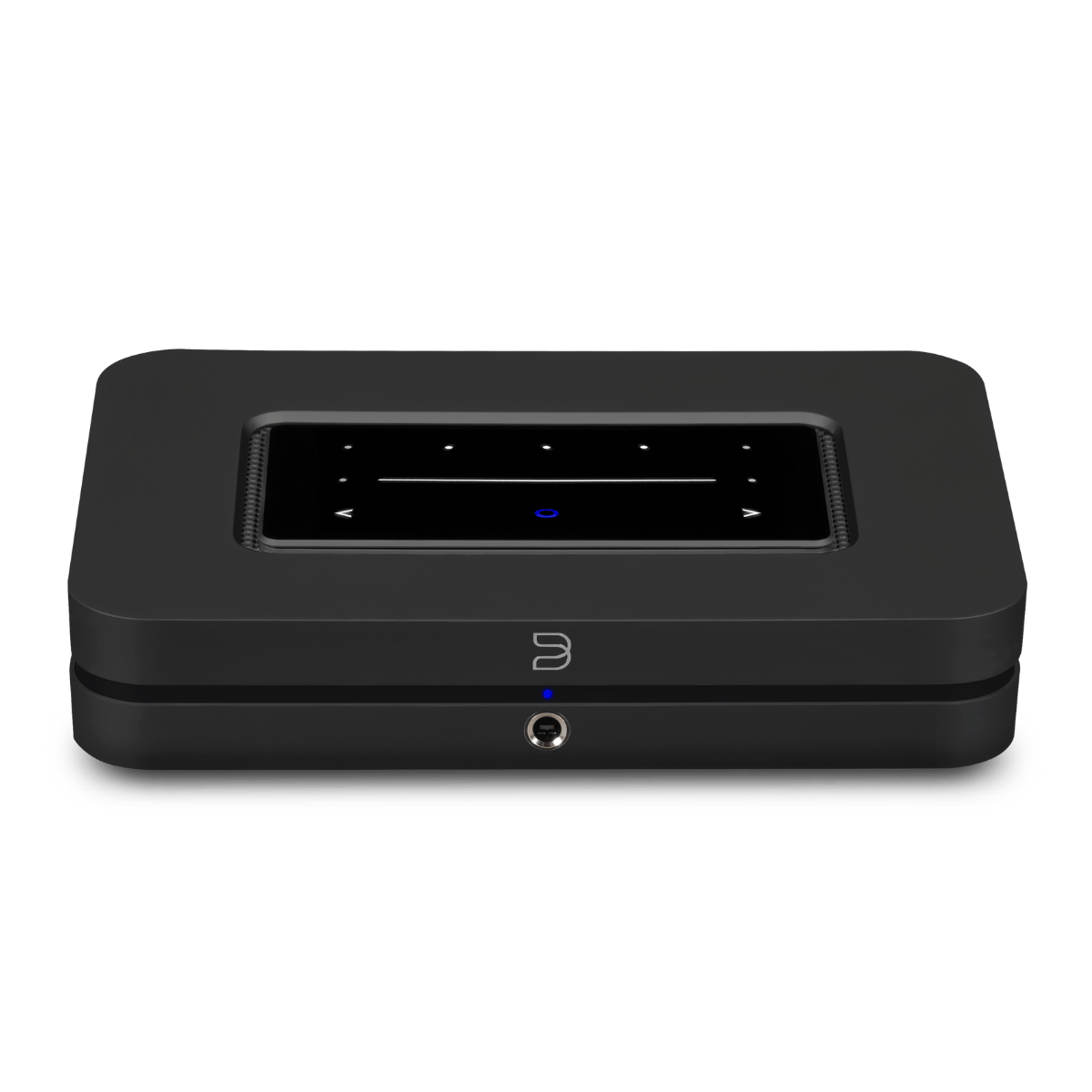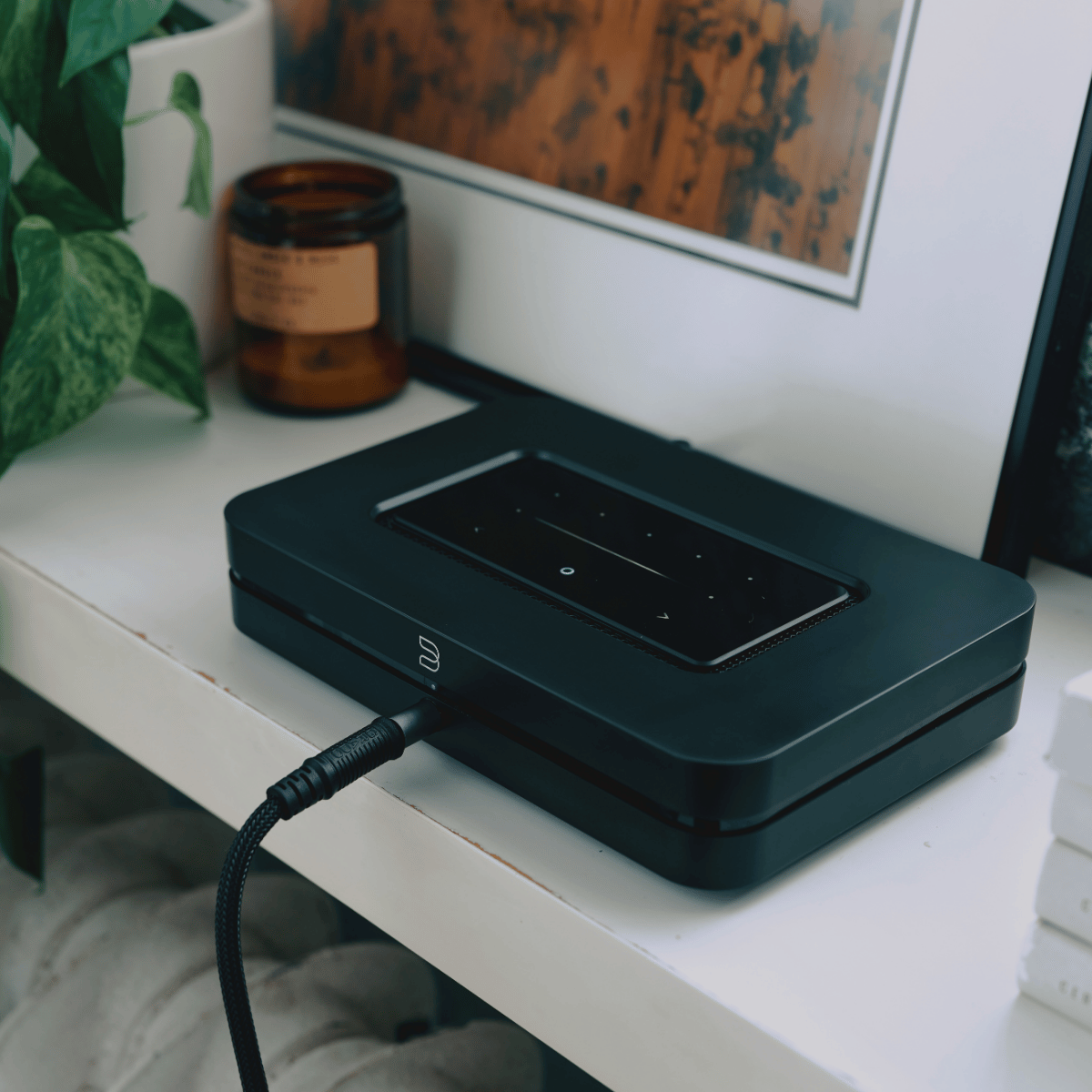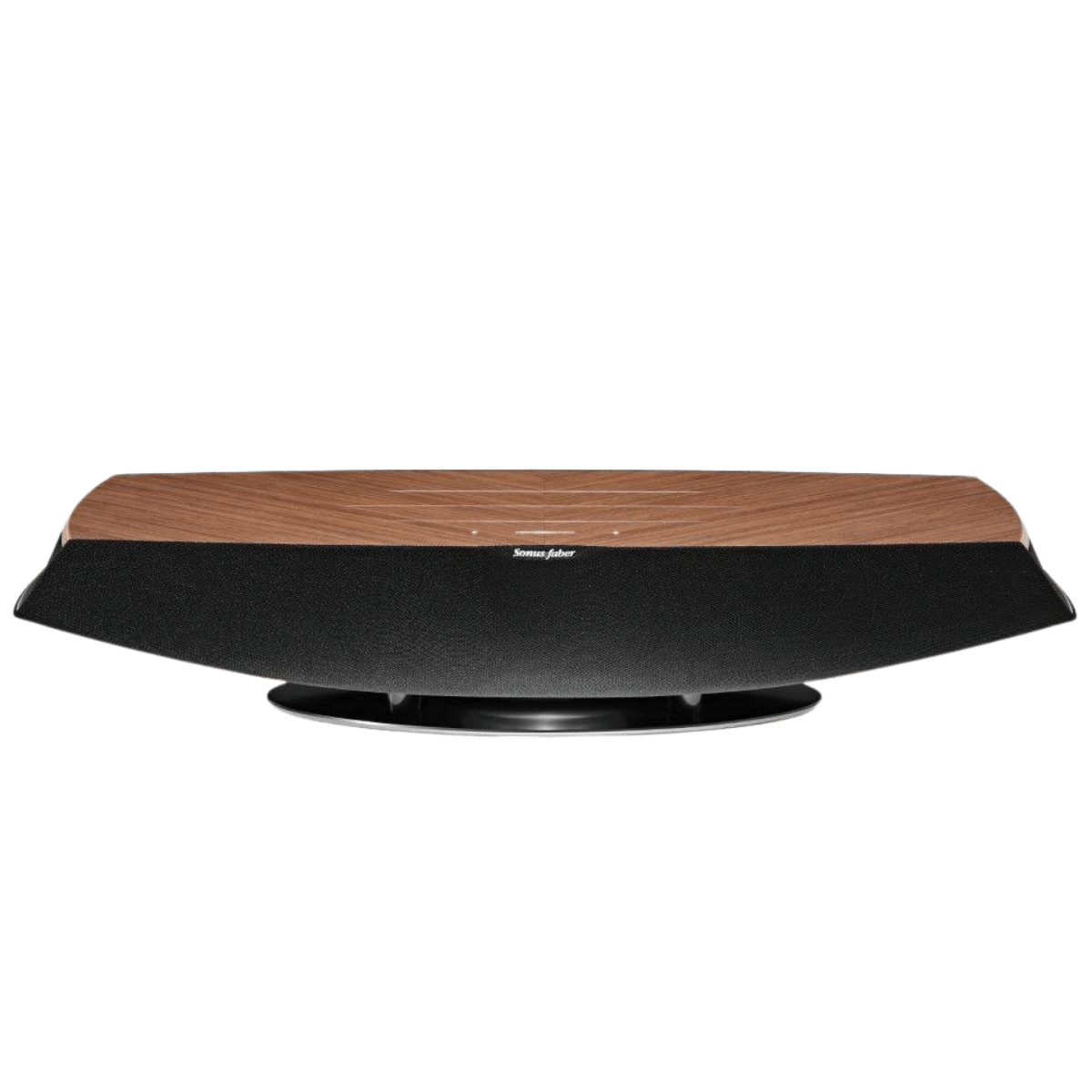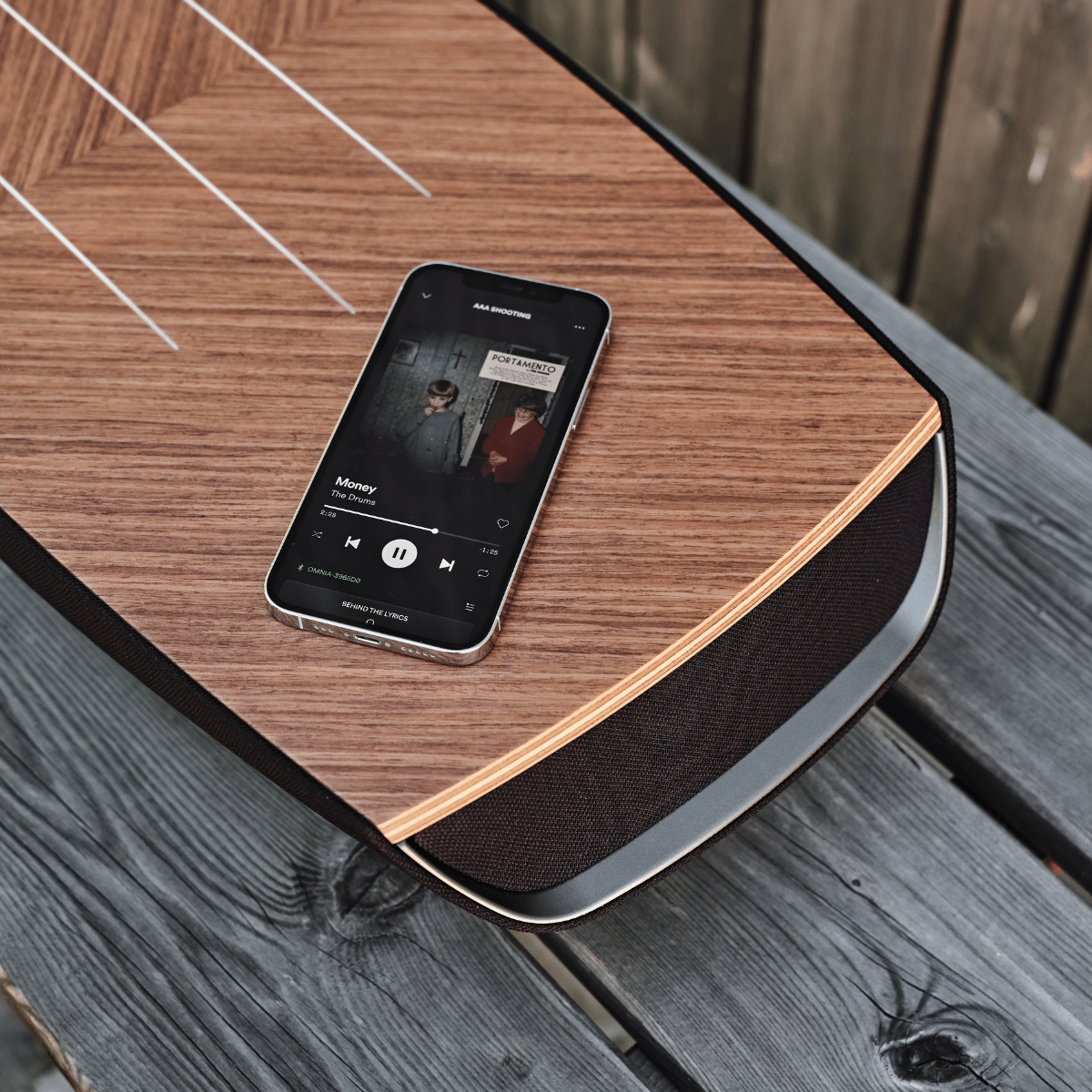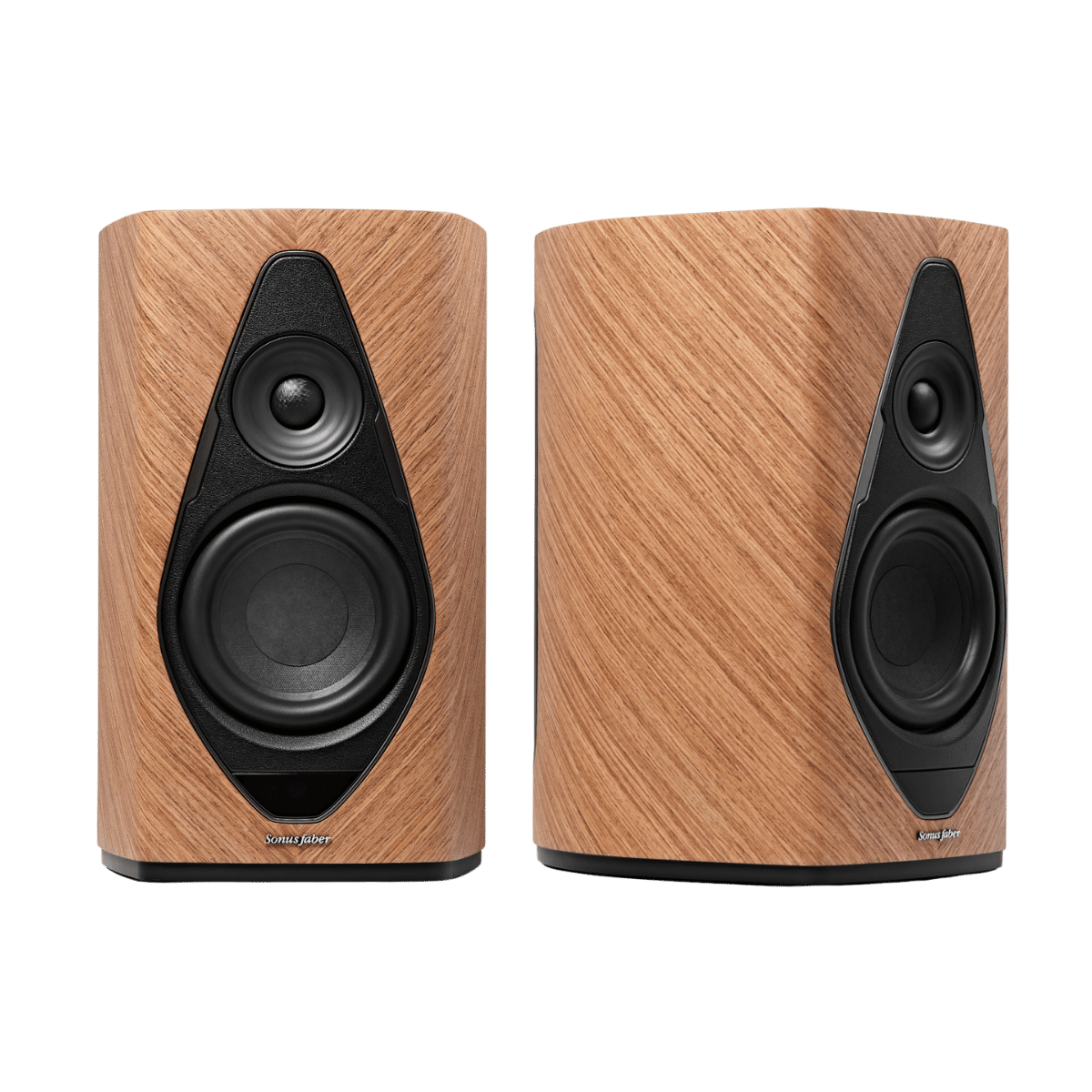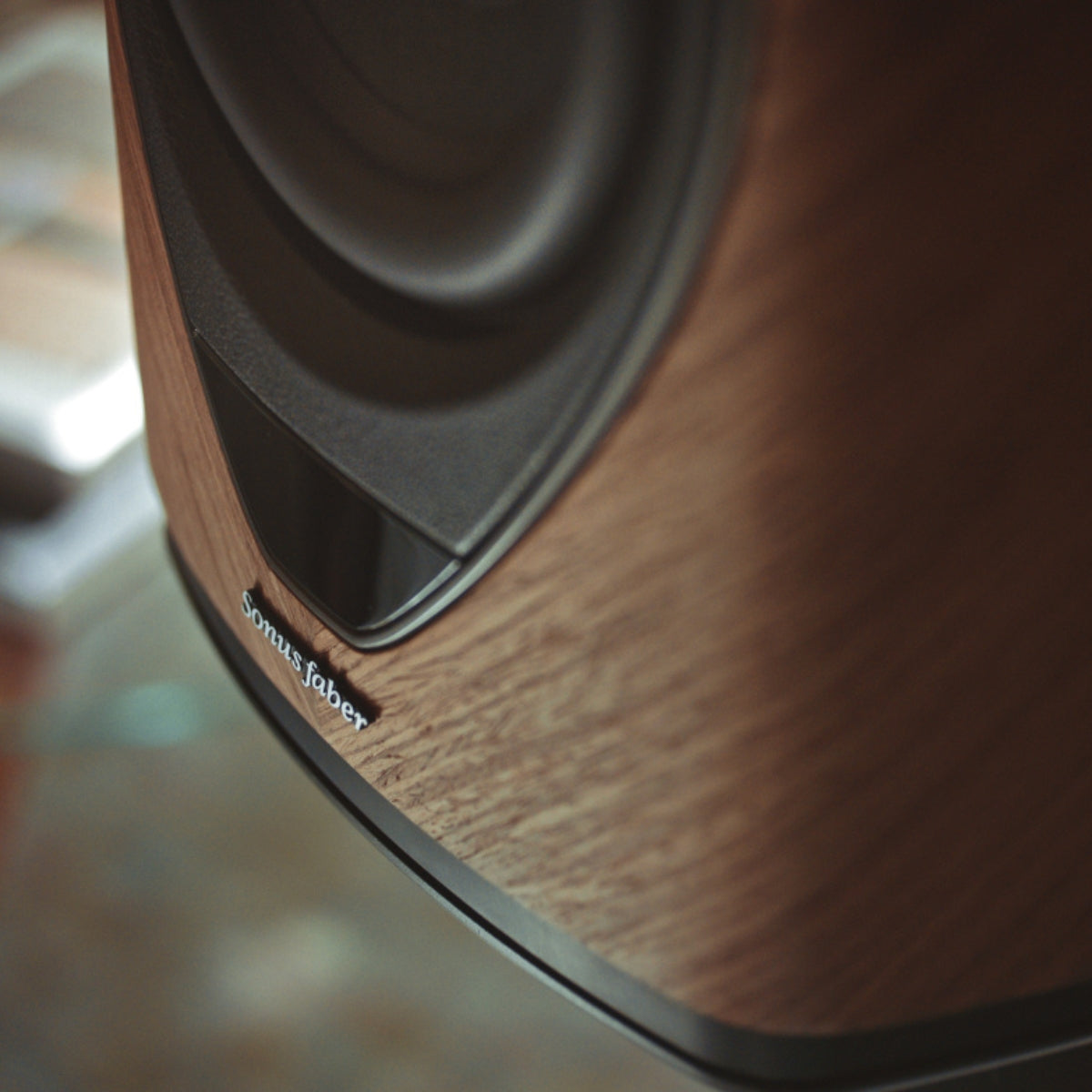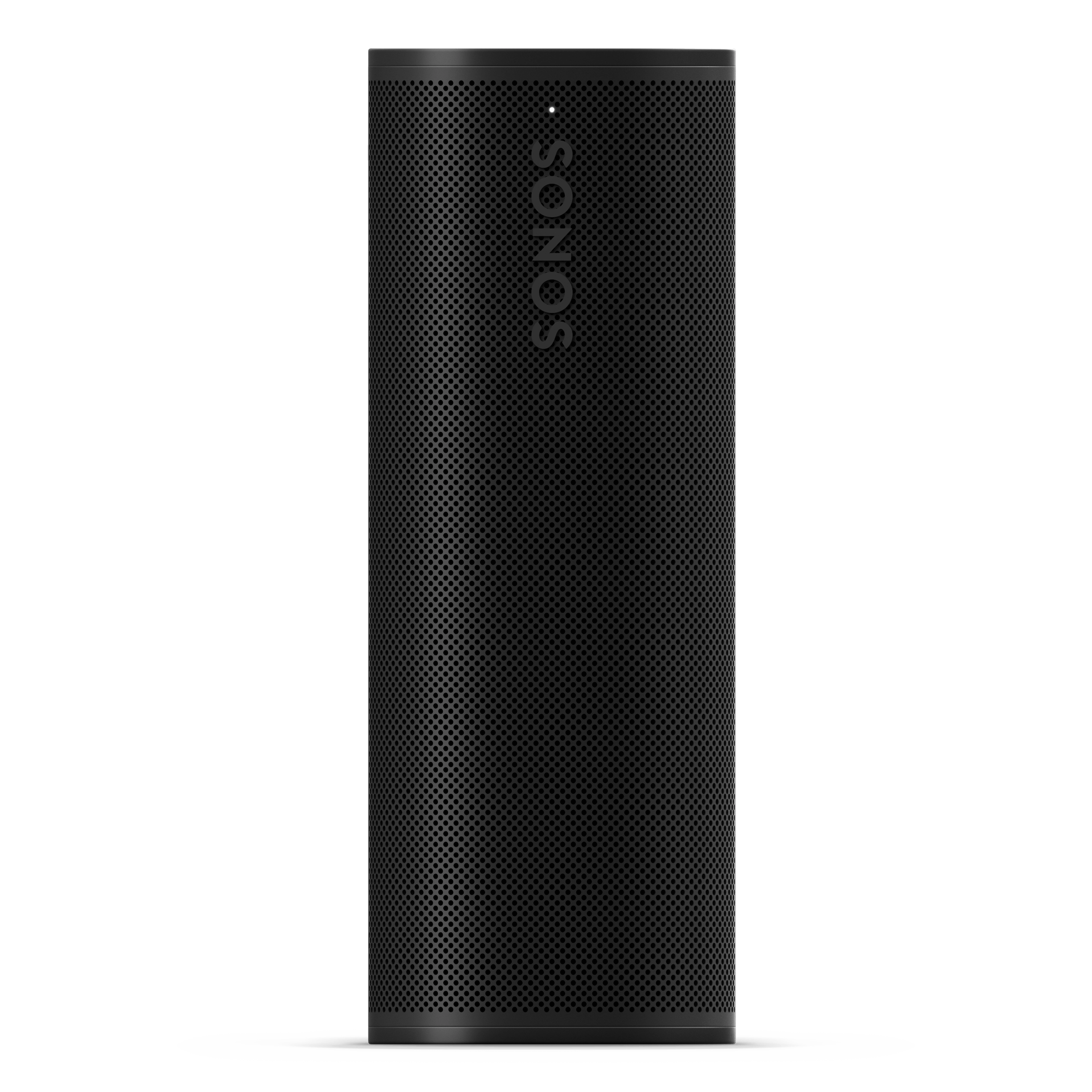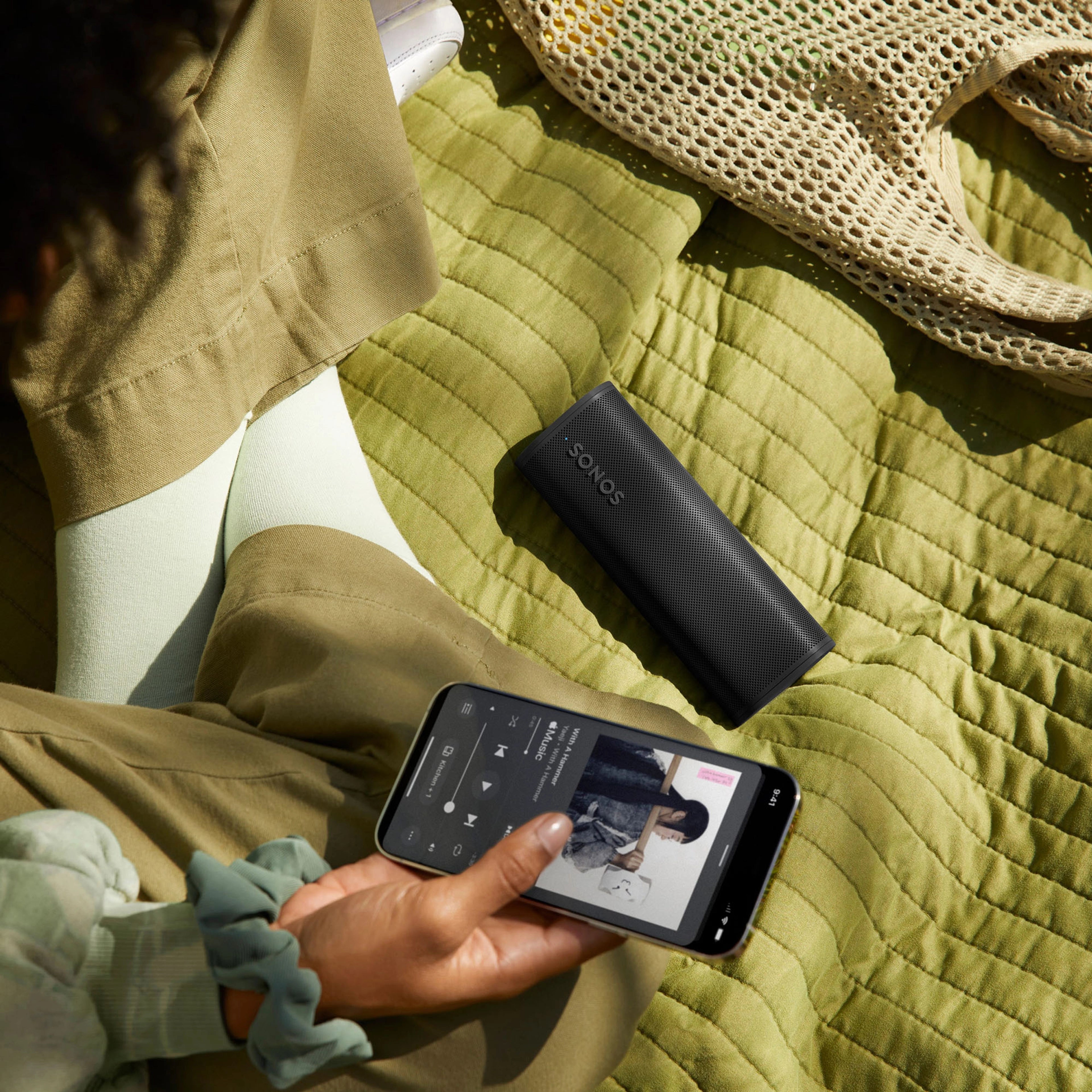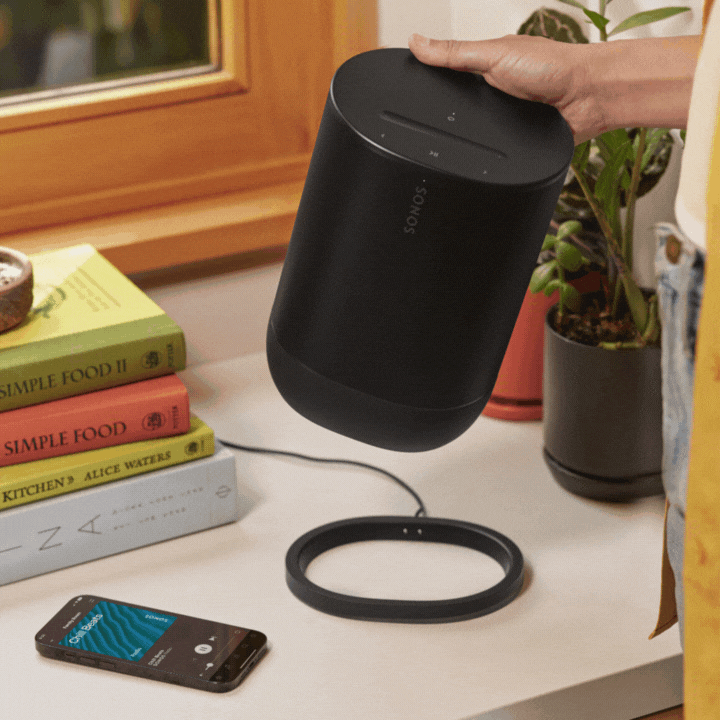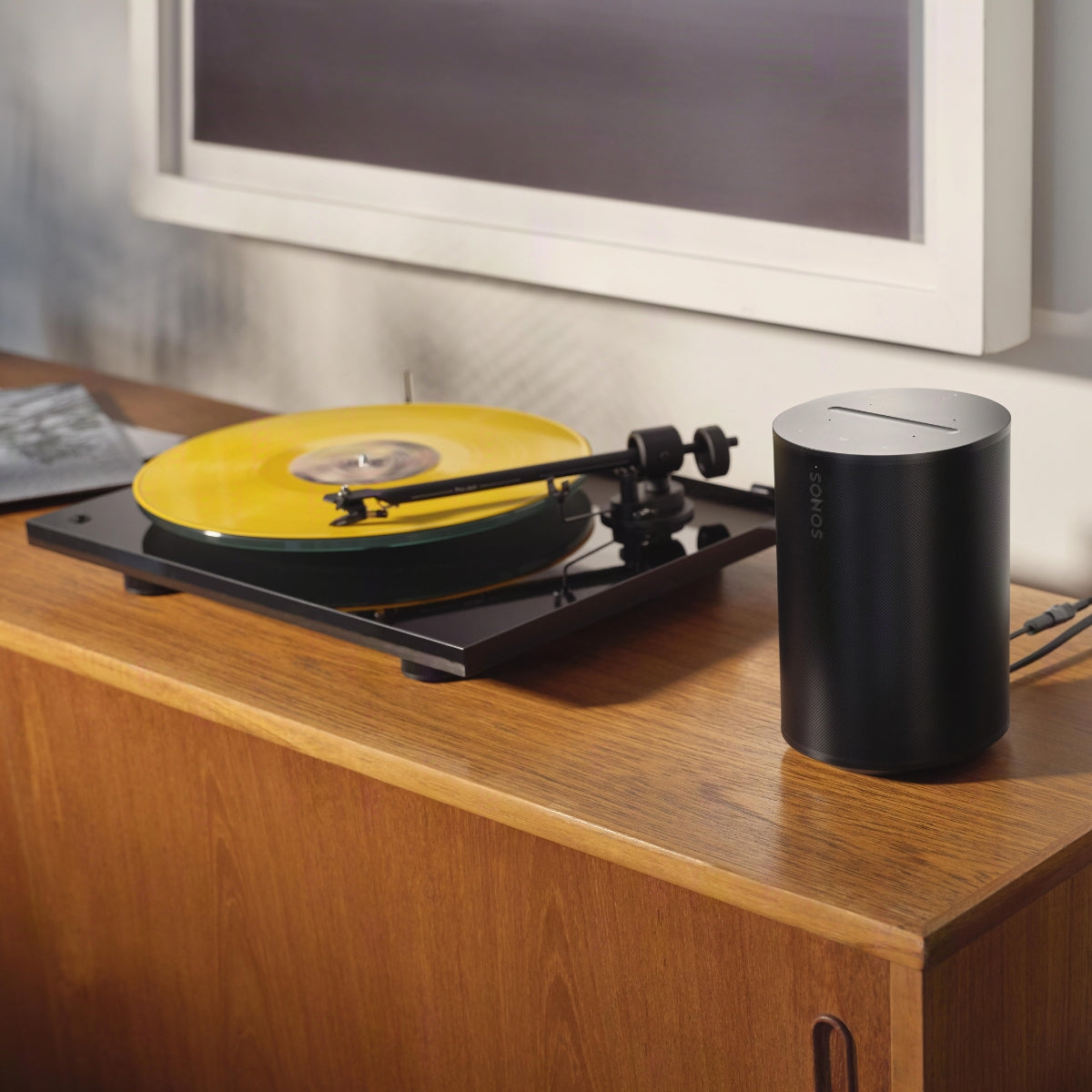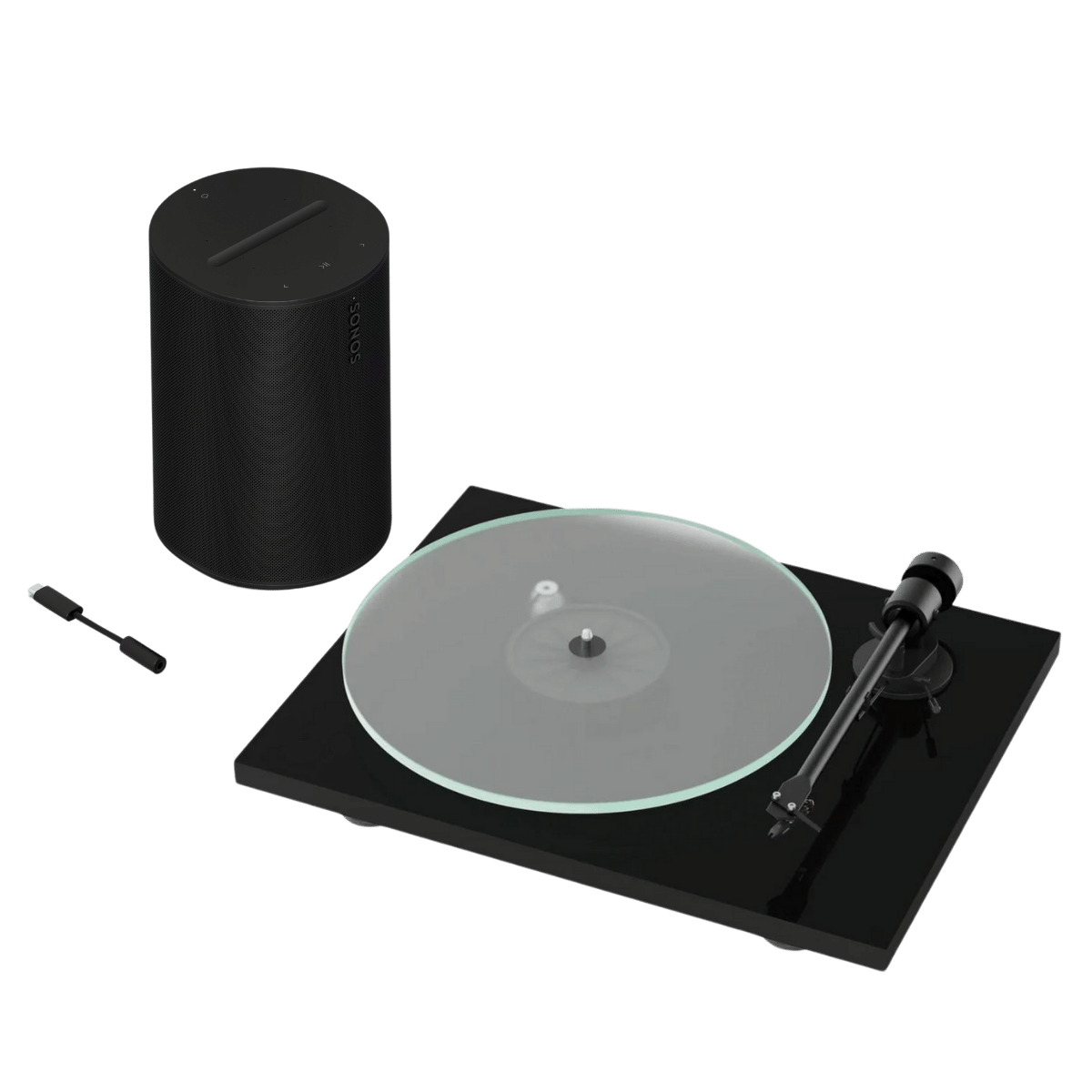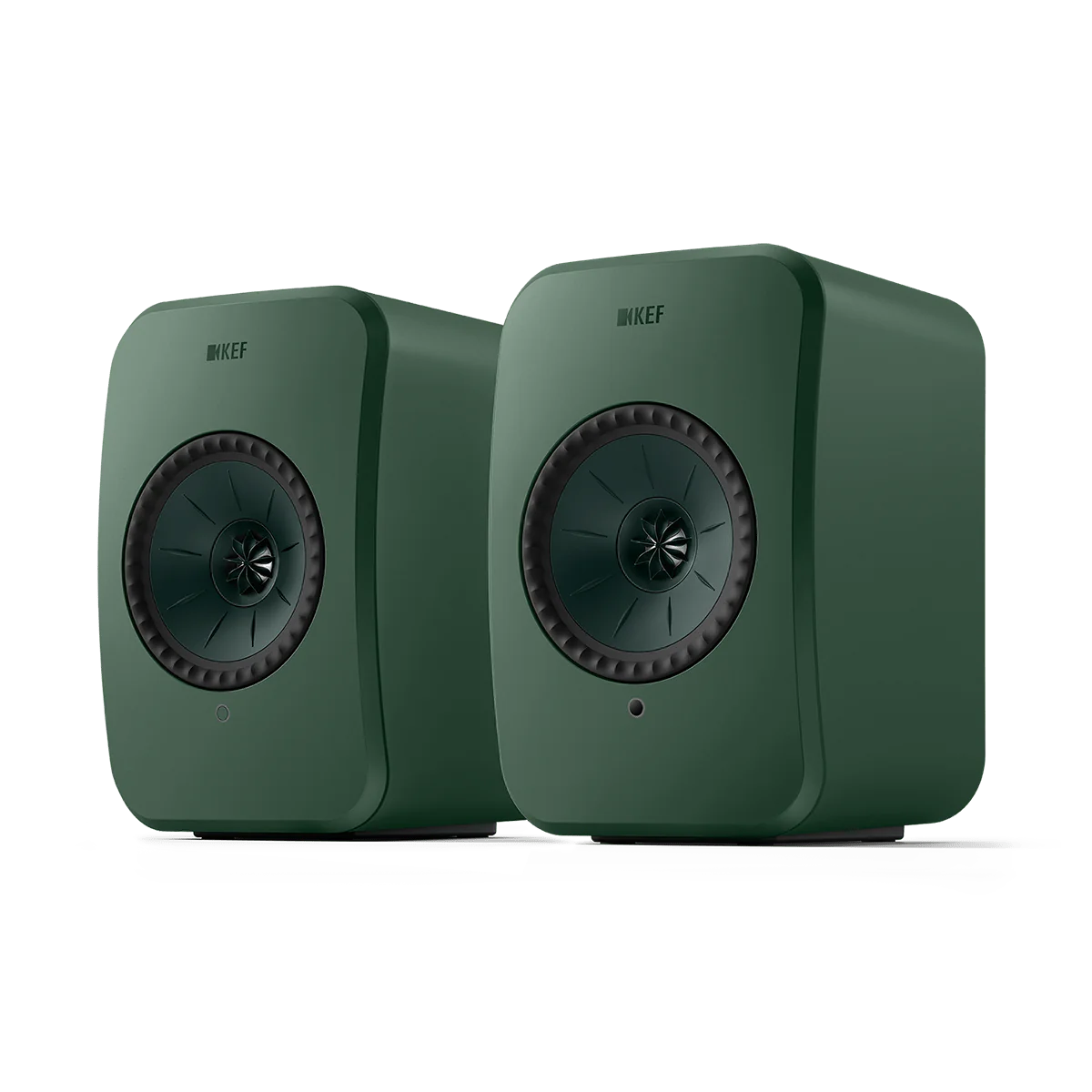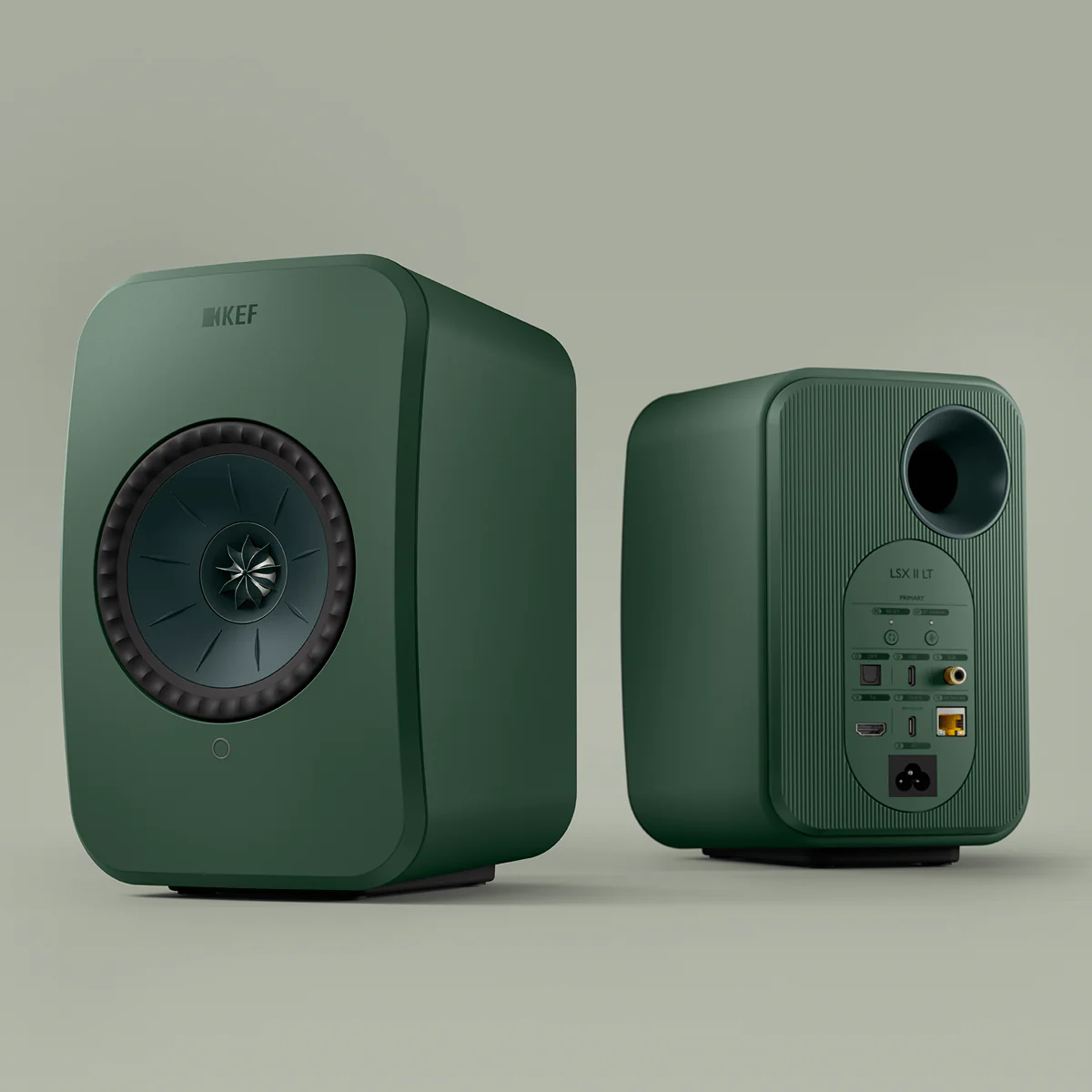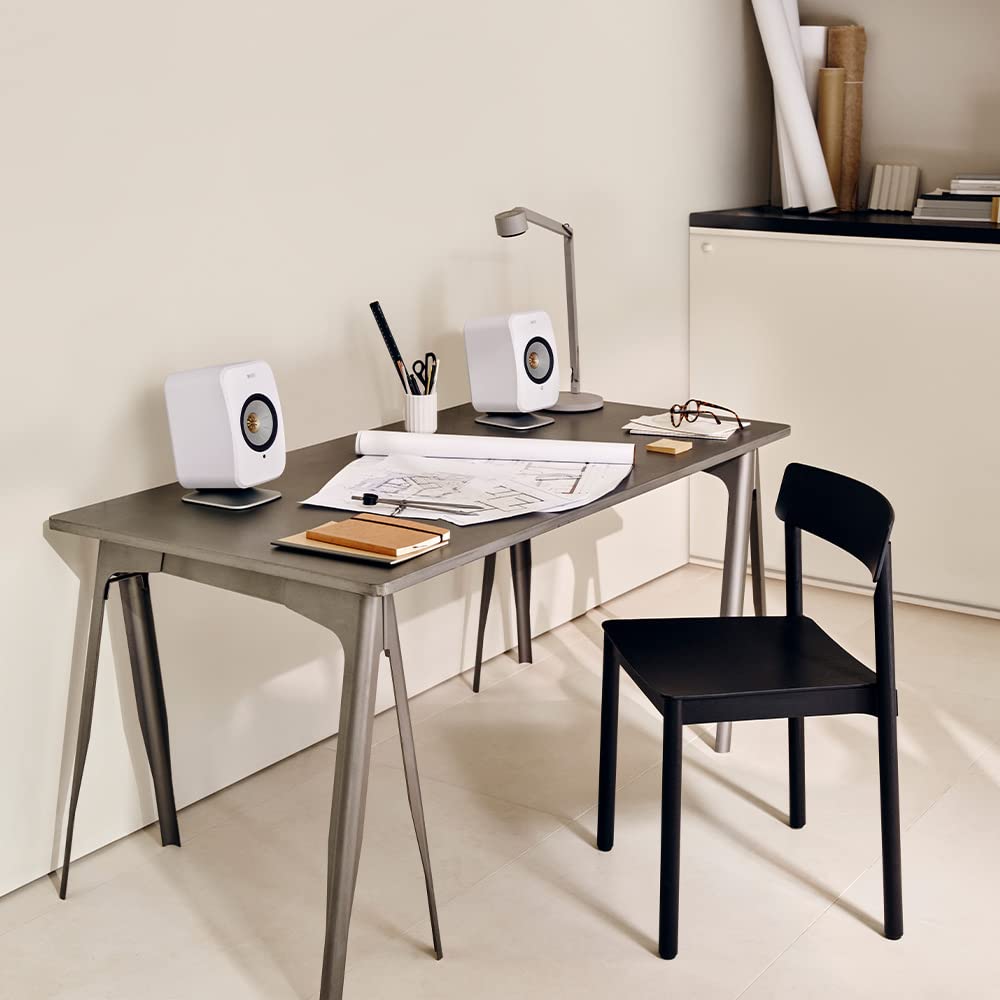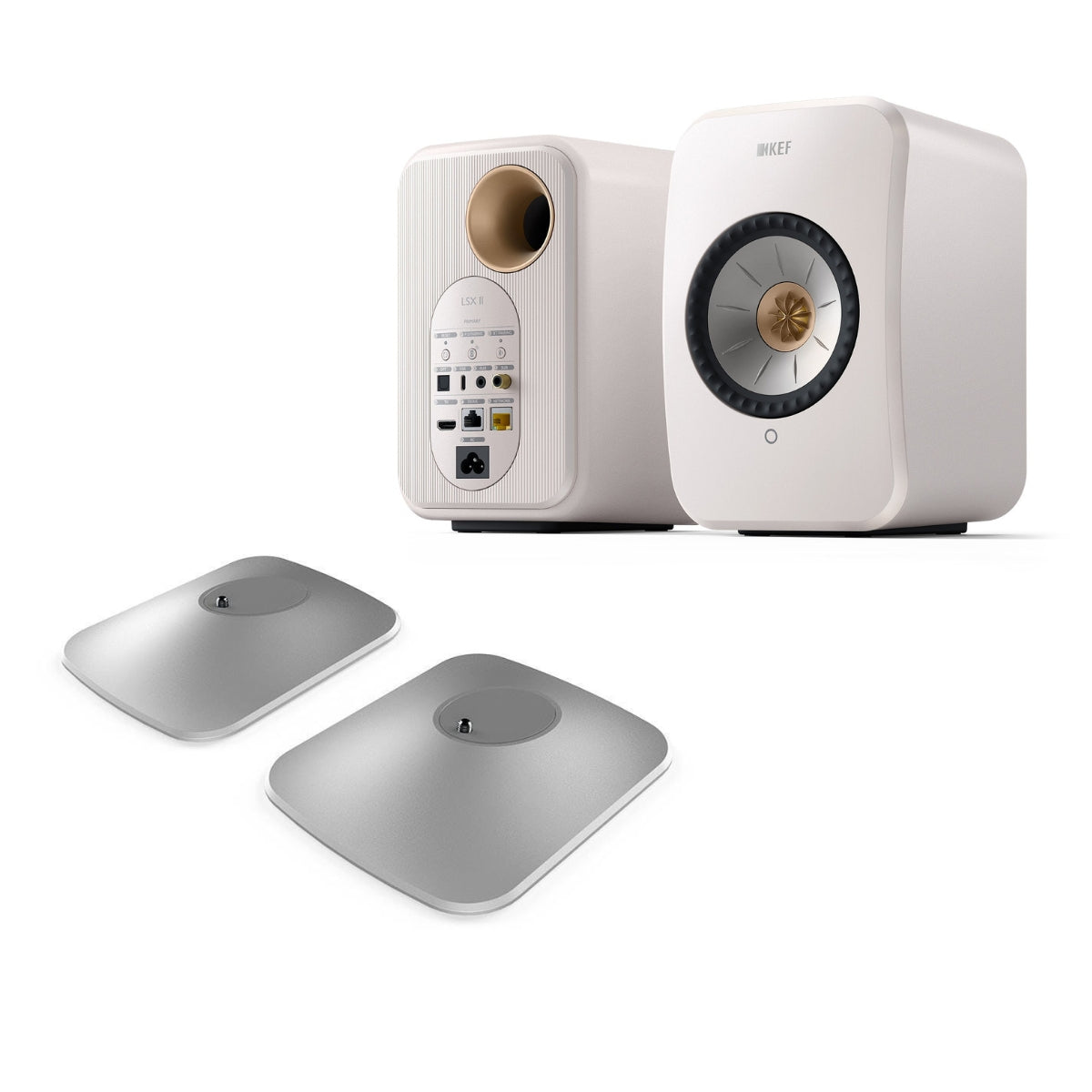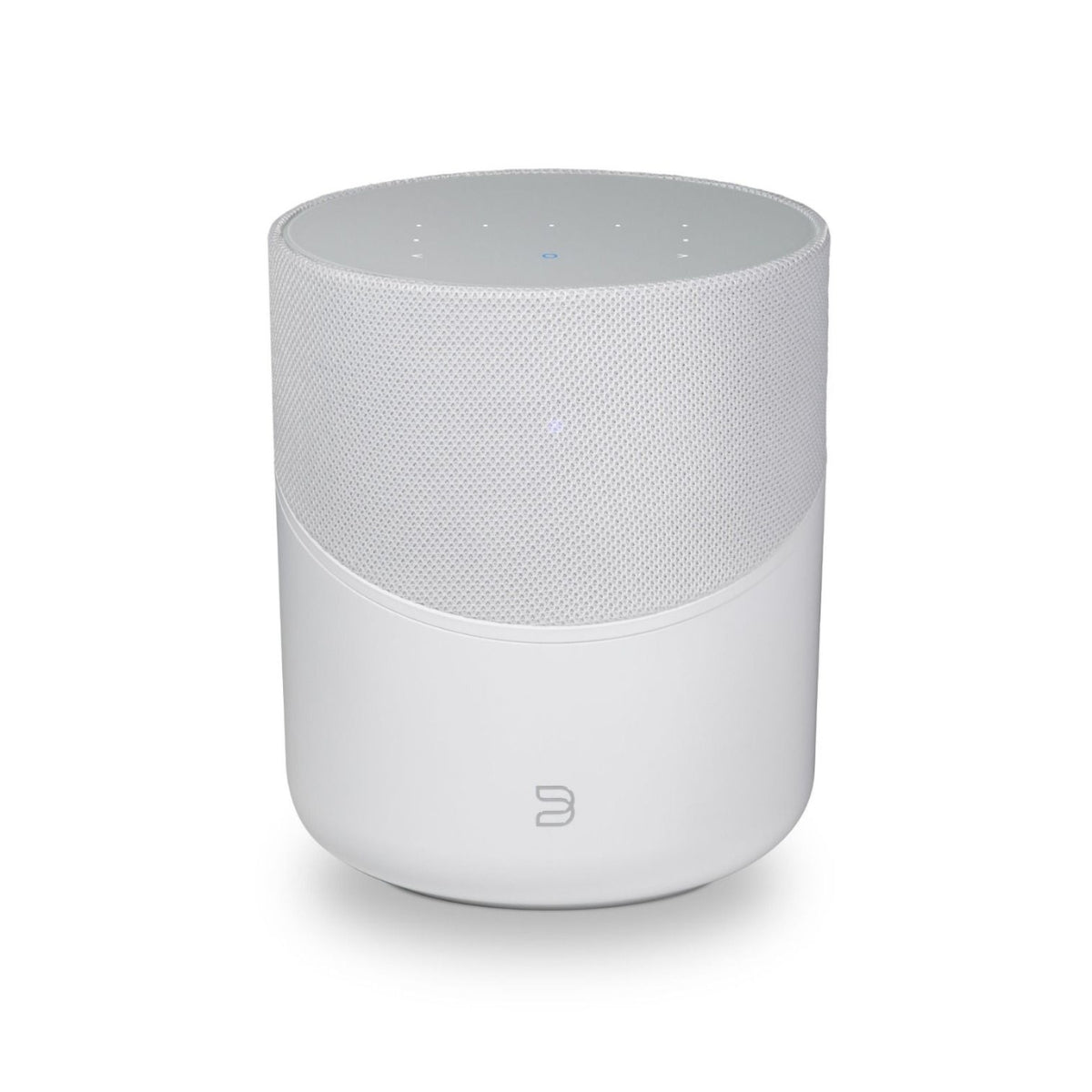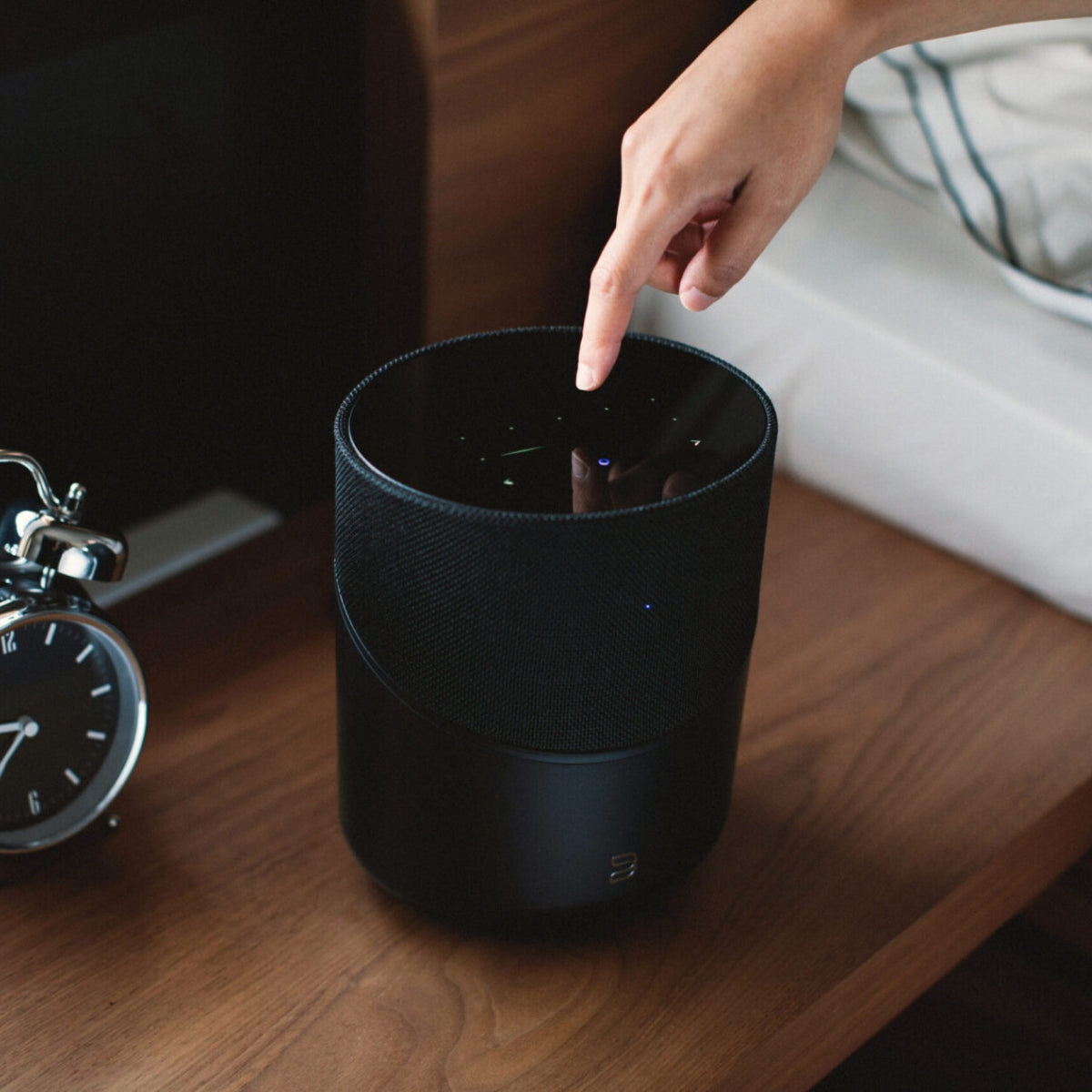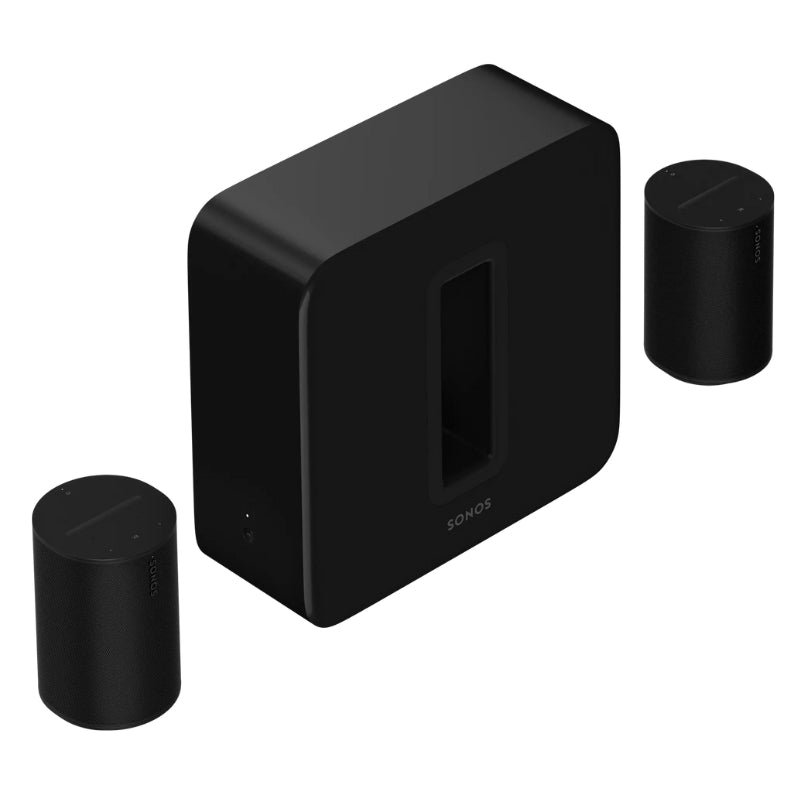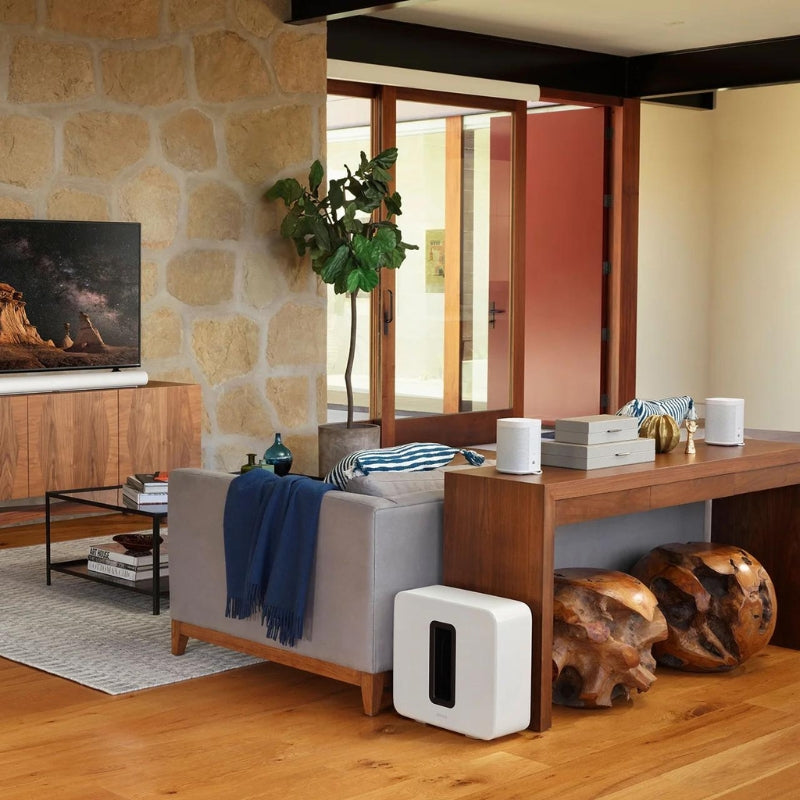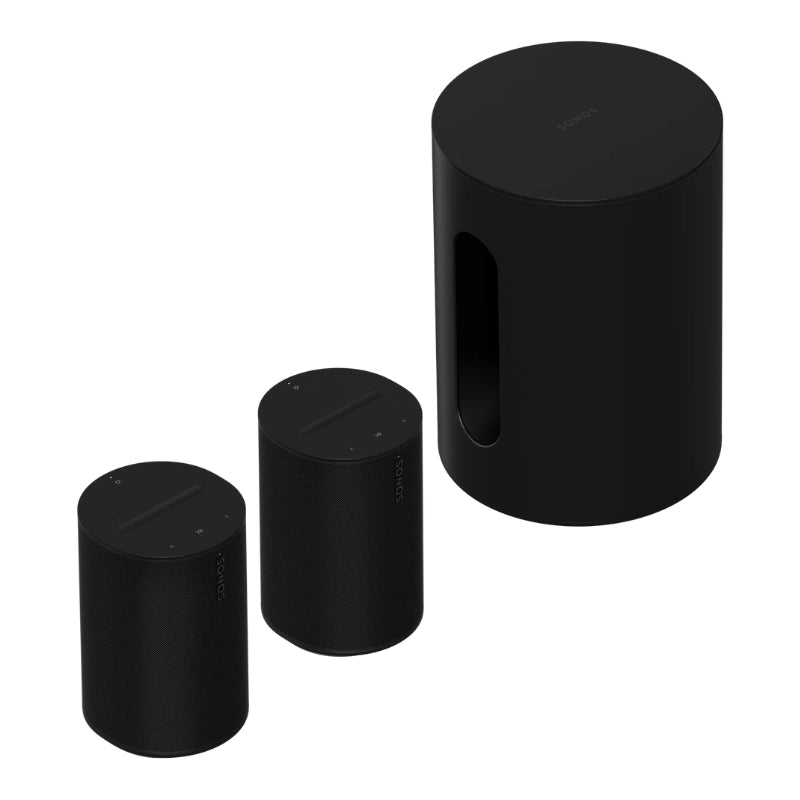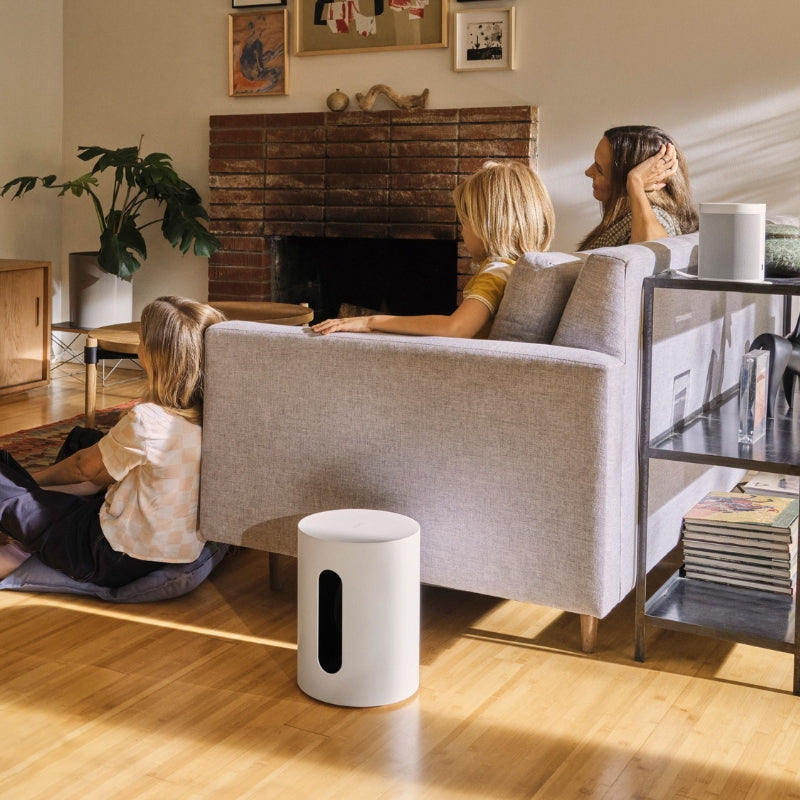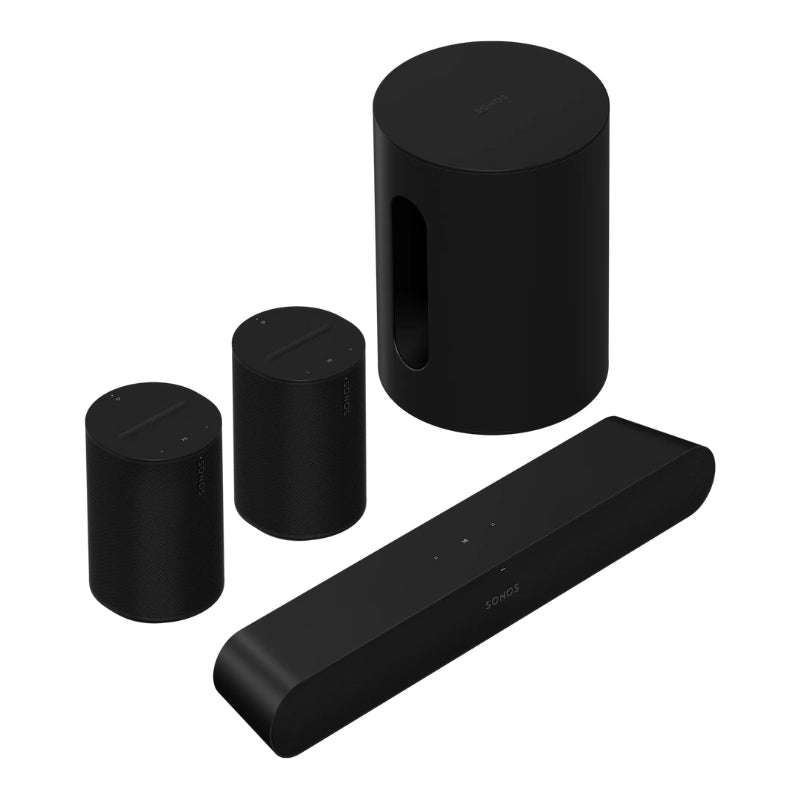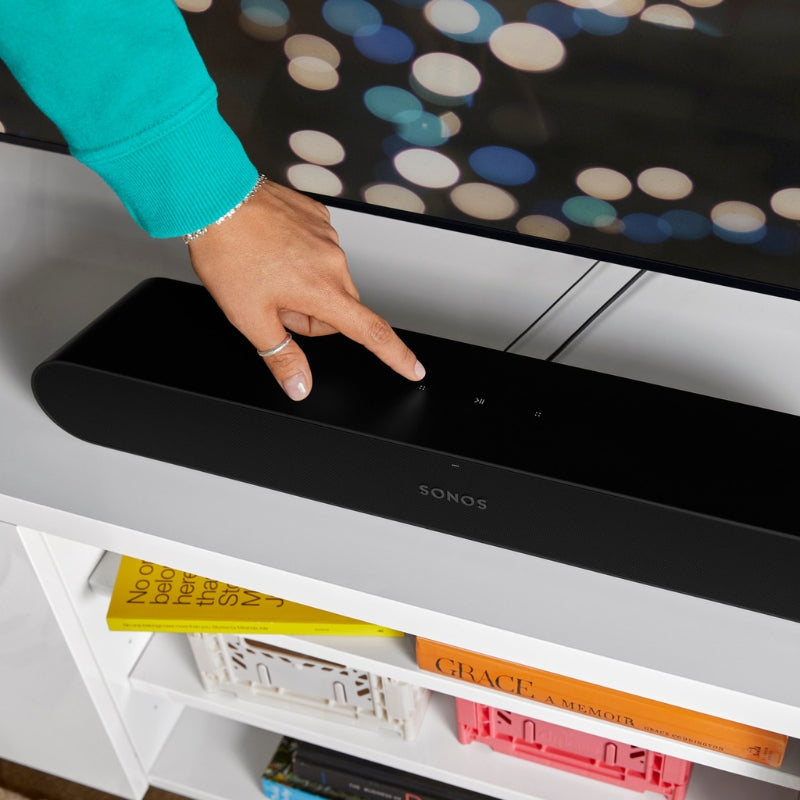
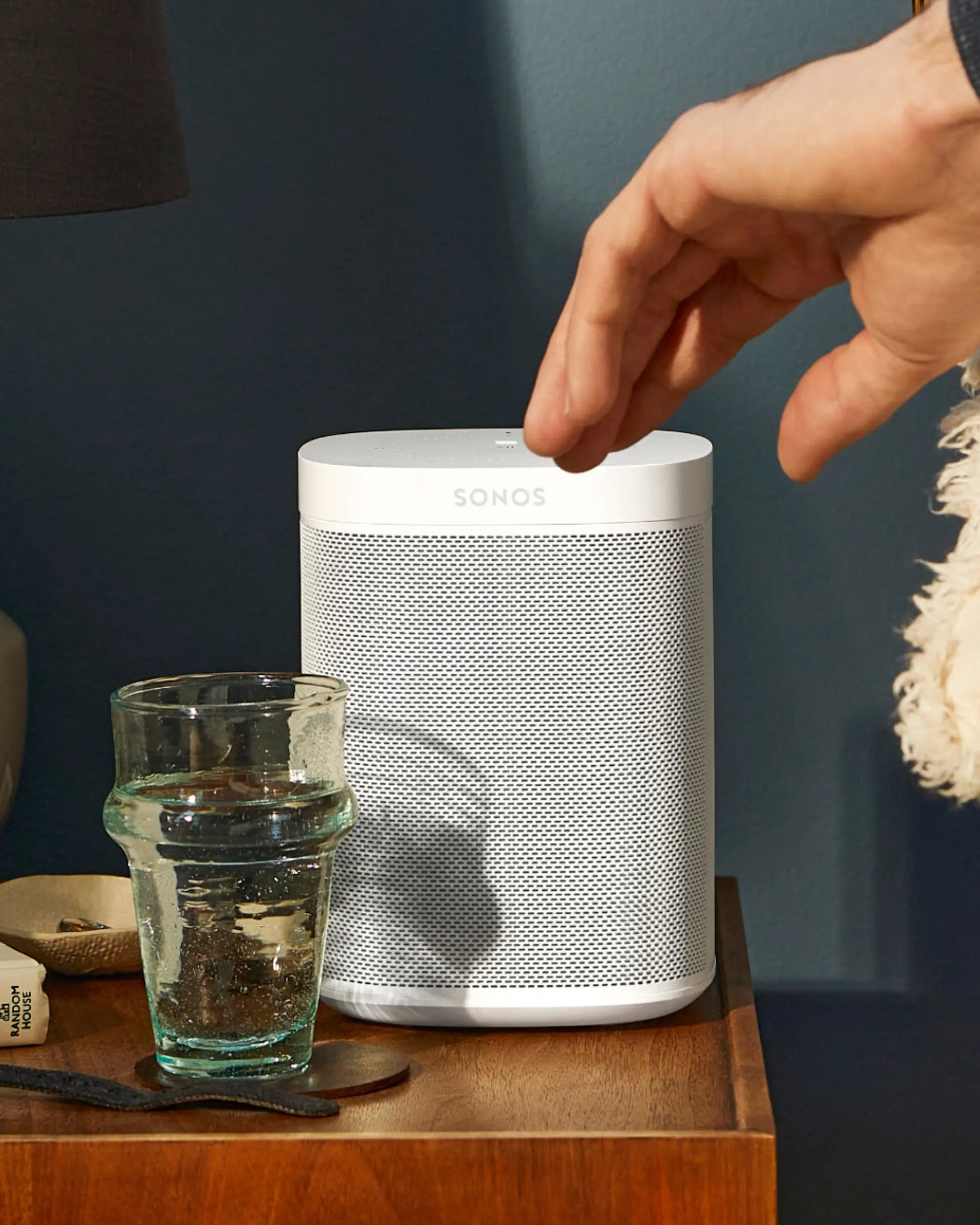
NARROW YOUR SEARCH FOR
Multiroom Audio
Filters
77 products
TELL ME MORE ABOUT
Multiroom Audio
Multiroom audio systems represent the pinnacle of home audio innovation, offering an unparalleled listening experience that seamlessly integrates into various rooms of a home.... Read More
Multiroom audio systems represent the pinnacle of home audio innovation, offering an unparalleled listening experience that seamlessly integrates into various rooms of a home.
This technology allows for the distribution and control of music across multiple spaces, ensuring a consistent and immersive sound experience whether you're in the living room, kitchen, or bedroom. The concept of multiroom audio has gained significant popularity in recent years, thanks to its ability to synchronize audio playback throughout the house, creating a harmonious and connected atmosphere.
Ideal for both music enthusiasts and those who love hosting, multiroom audio systems bring a new level of sophistication and convenience to home entertainment, allowing users to enjoy their favourite tunes or podcasts wherever they are in their home
What Is Multi-Room Audio and How Does It Work?
Multi-room audio is a sophisticated system that allows you to play music in multiple rooms of your home simultaneously or independently, all controlled from a single source. This innovative technology enables users to enjoy their favourite tunes, podcasts, or radio stations seamlessly in different areas of the house, creating a cohesive and immersive sound experience. The system typically consists of a network of wireless speakers, soundbars, or amplifiers connected to a central hub or controller, often integrated with a home Wi-Fi network.
The functionality of multi-room audio systems is remarkably user-friendly. With the use of a smartphone app, a tablet, or voice commands through smart home assistants like Amazon Alexa or Google Assistant, users can easily select which rooms to play music in, adjust volume levels, and even play different tracks in different rooms. This flexibility allows for personalized audio experiences; for instance, one can listen to a podcast in the kitchen while someone else enjoys music in the living room.
At the core of its operation, multi-room audio uses advanced technology to ensure synchronization of sound across all rooms without any noticeable lag. Some systems use proprietary mesh networks to enhance connectivity and stability, ensuring high-quality audio playback without interruptions or delays. This technology represents a significant leap in home audio solutions, offering both convenience and a superior listening experience.
Choosing the Right Components for Your Multi-Room Audio System
Choosing the right components for your multi-room audio system is crucial to ensure a seamless and enjoyable listening experience. The key is to balance quality, functionality, and compatibility with your living space and lifestyle.
-
Speakers: The cornerstone of any multi-room system. Options range from in-ceiling and in-wall speakers for a discreet look to standalone wireless speakers that can be moved as needed. Consider the size of each room and the desired sound quality when selecting speakers.
-
Amplifiers: If your speakers are not self-powered, you'll need amplifiers. Choose amplifiers that match the power requirements of your speakers and the size of your rooms.
-
Streaming Source and Control System: Most multi-room systems are controlled via an app on a smartphone or tablet, allowing you to stream music from various online services or your own digital library. Some systems also integrate with voice-controlled smart home devices for added convenience.
-
Network Requirements: Ensure your home Wi-Fi network has the bandwidth and range to support streaming high-quality audio in multiple rooms. Consider a mesh network system for larger homes to avoid dead spots.
-
Room Acoustics and Aesthetics: Consider the acoustics of each room and how different speaker types will interact with the space. Additionally, think about how the components will fit into your home’s decor.
-
Scalability: If you plan to expand your system in the future, choose components that are scalable and compatible with additional speakers or rooms.
By carefully considering these factors, you can build a multi-room audio system that not only sounds great but also integrates seamlessly into your home and lifestyle.
Final Thoughts
A multi-room audio system offers an exceptional way to enjoy music throughout your home, providing both flexibility and high-quality sound.
Whether you're creating ambience for a dinner party, enjoying background music during daily activities, or setting up a home cinema experience, the right multi-room audio system can significantly enhance your living space.
Remember, the key to a successful setup lies in selecting the right components that fit your space and needs, ensuring reliable network connectivity, and considering future scalability.
Some Quick FAQ:
What is the role of voice control in multiroom audio systems?
Voice control allows users to manage their multiroom audio systems using voice commands, such as selecting and playing music, adjusting volume, or controlling connected devices, providing a convenient hands-free experience.
What streaming services are compatible with multiroom audio systems?
Multiroom audio systems often support popular music streaming services such as Spotify, Tidal, and various others, allowing users to seamlessly access and play their favourite music throughout their homes.
What are some popular brands known for their multiroom audio solutions?
A: Brands like Sonos, B&W Formation series, KEF LS Series, Devialet, Heos by Denon, Audio Pro & BlueSound are renowned for offering high-quality multiroom audio systems and components designed to deliver exceptional audio performance and seamless integration throughout the home.
NEED MORE GUIDANCE?
We are here to help
Check out some of our most commonly asked questions.
What do I need to play records?
Getting into vinyl? That’s awesome! We have some curated turntable Hi-Fi packs, with everything you'll need to get spinning right away. But if you want to build your own, read on for all the details.
First off, you'll need a turntable. It's the star of the show, so make sure it’s in good nick, with a decent cartridge and stylus (needle).
Next, there’s the phono preamp. Some turntables or amplifiers come with one built-in, but if yours doesn’t, you’ll need one as a bridge between your turntable and amplifier or powered speakers.
For the sound output, you’ve got two options. You can go with a traditional setup involving an integrated amplifier to take the signal from your phono preamp and power your passive speakers. Alternatively, you can opt for powered speakers, which have the amplifier built in – a handy all-in-one solution.
Speaking of speakers, good ones are a must for that rich, warm vinyl sound we all love. Whether you go for bookshelf or floorstanding speakers (or powered ones) depends on your space and budget.
And there you go! With these essentials, you’ll be ready to dive into your vinyl collection and enjoy that classic sound.
What can a wireless speaker do?
Wireless speakers are a game-changer for how you enjoy music and audio around the house. First off, they let you stream music wirelessly from your phone, tablet, or computer, so no more messing about with cables. You can easily play tunes from Spotify, Apple Music, Tidal or whatever streaming service you fancy.
If you’re into having music everywhere, many wireless speakers offer multi-room audio. You can sync them up to play the same music in every room or control what plays in each room individually, perfect for parties or just keeping the vibes consistent throughout your home.
Voice control is another brilliant feature. Many come with built-in assistants like Alexa, Google Assistant, or Siri. You can control your music with just your voice, ask for the weather, set reminders, or even control other smart home devices.
Sound quality? These little gadgets often pack a punch, delivering high-quality audio that can rival traditional wired setups. Some even offer 360-degree sound, filling the room with music from every angle.
In a nutshell, wireless speakers bring flexibility, convenience, and top-notch sound to your audio experience, making them a fantastic addition to any home. Whether you’re hosting a party, working from home, or just chilling out, they make listening to music a breeze.
How do you choose the right speaker & amplifier combination?
Deciding on a good speaker and amplifier combination is like putting together a perfect wine and cheese pairing—it’s all about balance and harmony. Here’s a conversational guide to help you through it:
First, consider your speakers. These are your main players, so you want to choose ones that fit your space and listening preferences. If you love deep bass and have a bit of room, floorstanding speakers might be your go-to. For smaller spaces or a more subtle look, bookshelf speakers are fantastic.
Now, onto the amplifier. This is where things get interesting. Your amp needs to match your speakers in terms of power and impedance. Check the wattage ratings on your speakers—your amplifier should provide enough power to drive them properly. Too little power and you’ll be missing out on sound quality; too much, and you risk damaging your speakers.
Next, think about the impedance (measured in ohms). Your amp and speakers should be compatible here too. Most speakers are rated at 8 ohms, but some can be 4 or 6. Make sure your amplifier can handle the impedance of your speakers to avoid any performance issues.
Another important factor is the type of sound you’re after. Some amps are known for their warm, rich tones, while others might be more neutral or even slightly bright. It’s a bit like choosing between a vinyl record and a digital stream or CD —each has its own charm. If possible, listen to different amp and speaker combinations to see what sounds best to your ears.
If purchasing online, note that at LE, we have made recommendations on speaker & amplifier combinations that we think sound wonderful together within each product listing.
Don’t forget about connectivity and features. Modern amplifiers often come with a host of options like Bluetooth, Wi-Fi streaming, and various inputs for all your devices. Make sure your amp has the inputs you need for your turntable, CD player, or streaming device.
Finally, consider your budget. Great sound doesn’t always mean breaking the bank, but be prepared to invest to get a quality setup that will last.
In the end, trust your ears. Listen to a few combinations if you can, and go with what makes your music sound the best to you.
Why do I need a headphone amplifier?
If you’re diving into the world of high-quality audio, a headphone amplifier can be a real game-changer. Think of it like this: most standard devices, like your smartphone or laptop, just don’t have the oomph needed to drive headphones properly. They might get the job done, but they won’t do your music justice. A headphone amp gives your headphones the power they need, ensuring you get the volume and clarity that really makes your music shine.
It’s not just about making things louder, either. A good headphone amp can significantly improve sound quality. You’ll get clearer highs, richer mids, and tighter bass, making your favourite tracks sound even better. You might notice details you’ve never heard before, especially if you’re listening to high-resolution audio files.
Premium headphones often have higher impedance, meaning they require more power than your typical audio source can provide. A headphone amp can handle this with ease, making sure your headphones perform at their absolute best. Plus, many amps come with extra features like bass boost, equalisation, and gain control, giving you more ways to tweak the sound to your liking.
In short, if you’re passionate about your music and want to hear it in the best possible way, a headphone amplifier is definitely worth considering. It’s all about unlocking the full potential of your gear and really getting the most out of your listening experience.
Where should I start when designing a home cinema?
Designing your own home cinema? That's awesome! We are here to help walk you through the process, but as a starting point, here’s what we would recommend and where to kick things off:
First up, pick your spot. For most people this is your existing lounge room, but if you have an underused garage, or spare bedroom, then you have an opportunity to create your very own true Home Cinema experience. Find a room that’s just right—not too cramped and ideally away from noisy areas. This sets the stage for that immersive movie experience.
Next, think about how you’ll set things up. Plan where your seats will go and where to place your projector screen for the best view from every angle. It’s all about creating that comfy, cinematic vibe.
Sound matters, too. Consider if you want a wireless system for simplicity or a full surround sound speaker system with AV receiver for that surround-sound thrill. Think about soundproofing or adding acoustic panels or thick carpets to really amp up the audio quality of the room.
Now, onto the screen. Decide between a crisp TV or a projector setup, depending on your room size and personal style. Maybe even throw in some dimmable lights or smart lighting to set the mood just right.
And hey, don’t forget comfort. Invest in plush cinema seating and think about the décor—whether it’s movie posters, blackout curtains, or popcorn machine & bar area, whatever gives you that true cinema feel.
Lastly, tech it up! Make sure everything—from your Blu-Ray player & Apple TV to your gaming consoles—is set to sync perfectly with your new setup.
With these steps, you’re on your way to creating a home cinema that’s not just a space, but an experience. Enjoy movie nights like never before!

